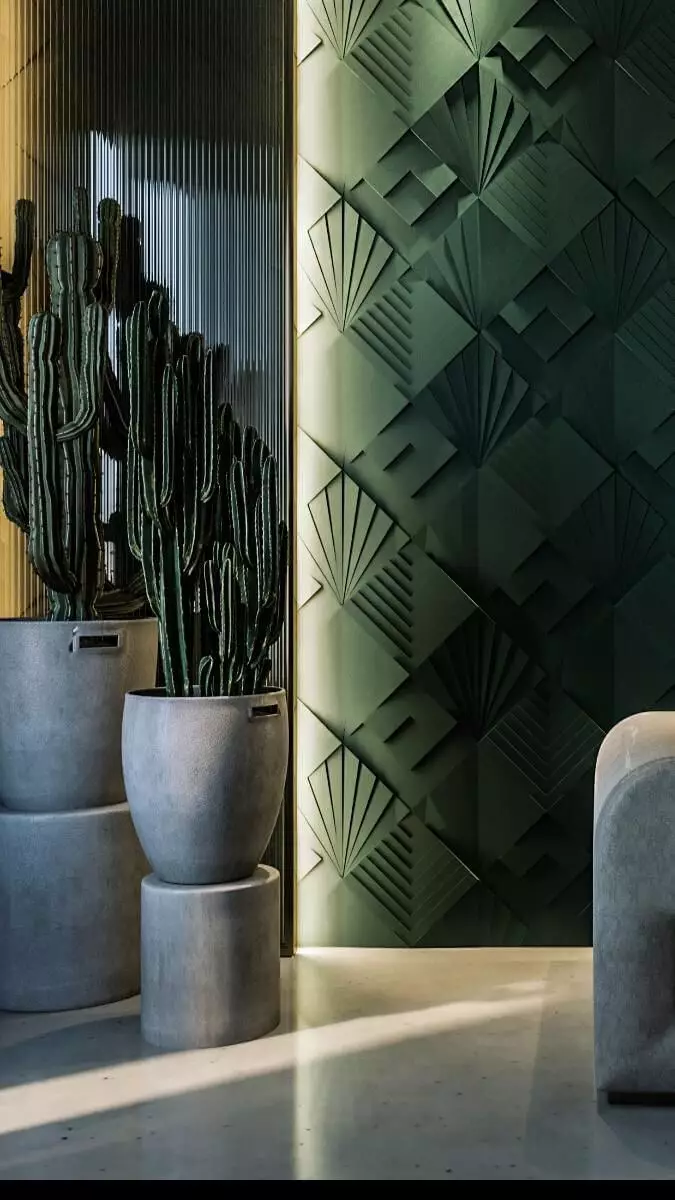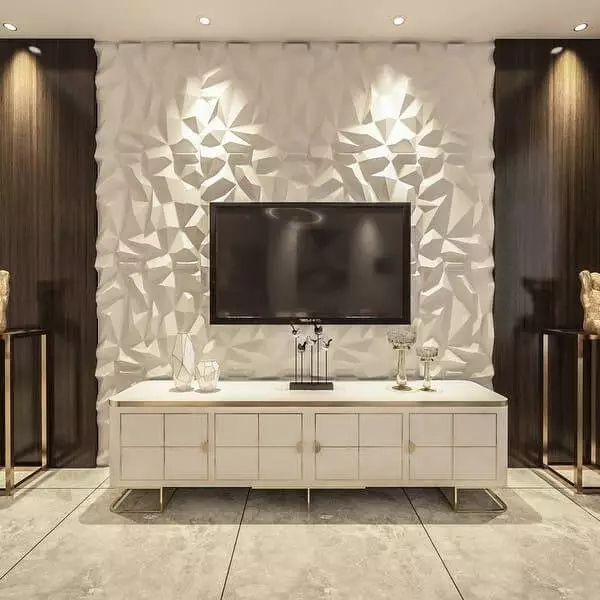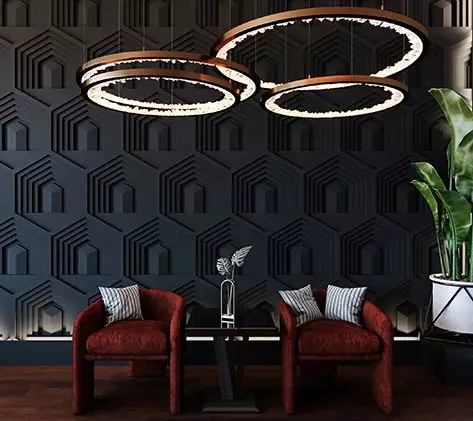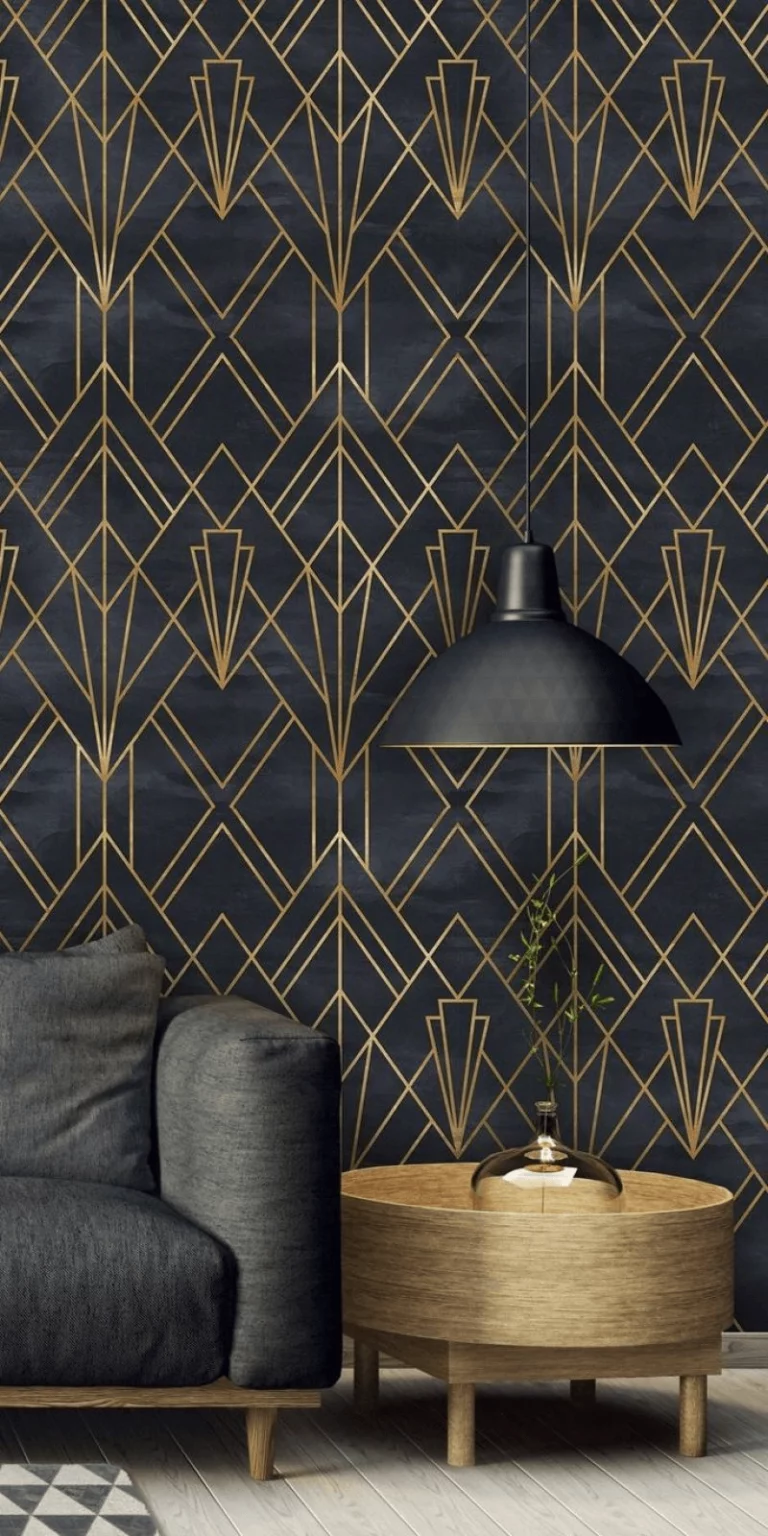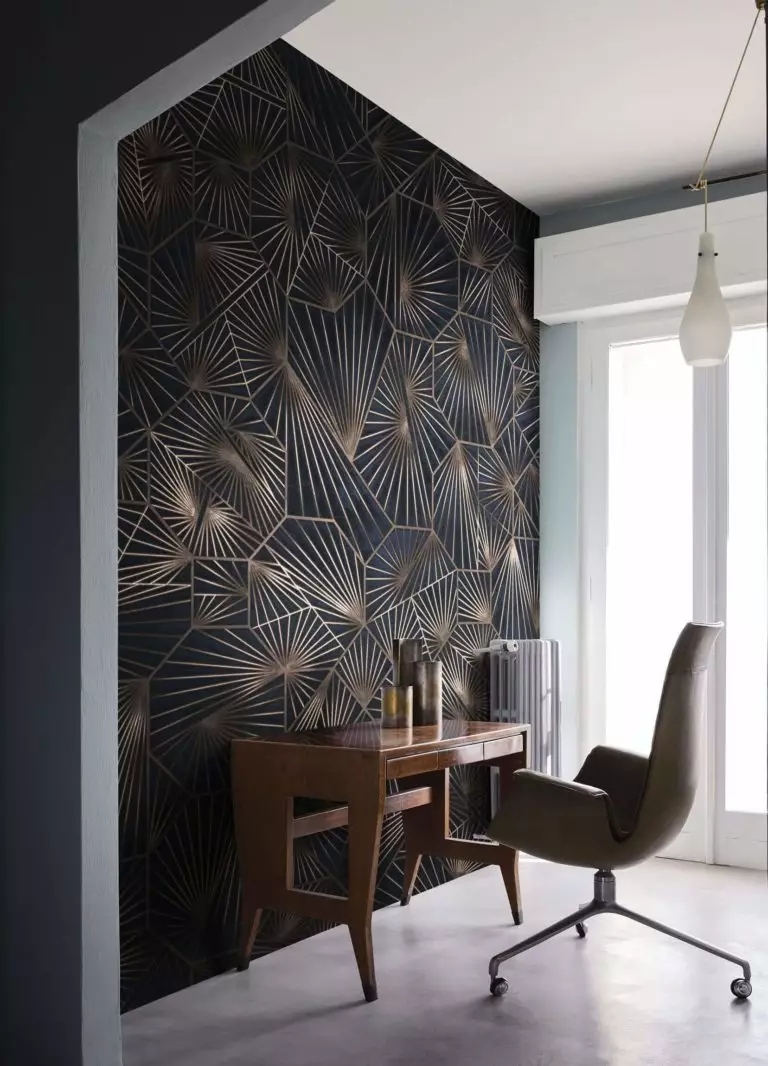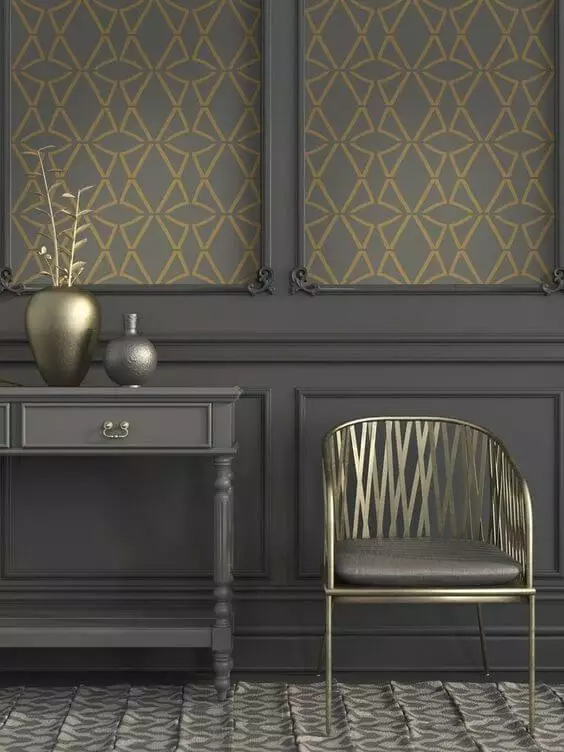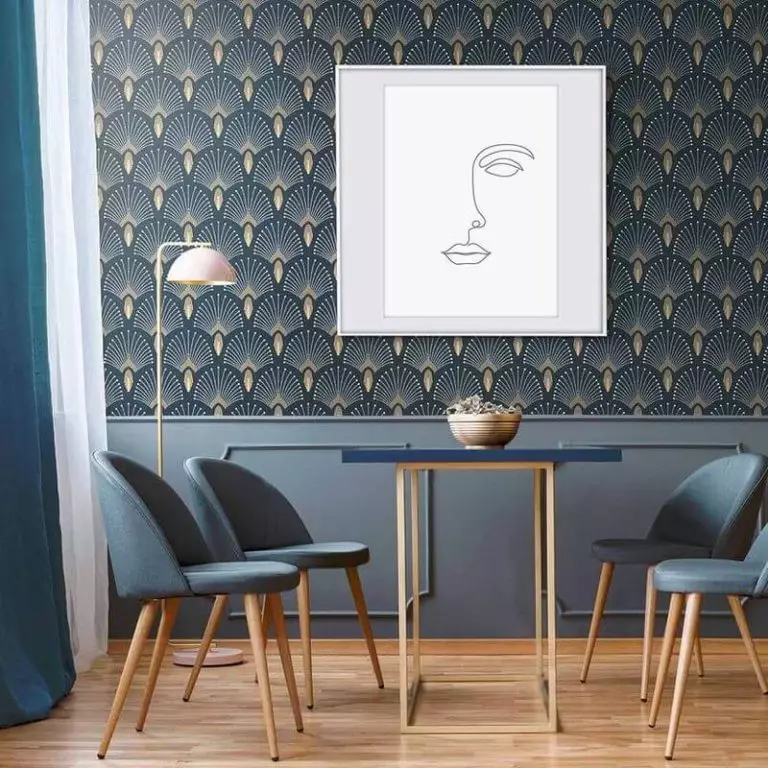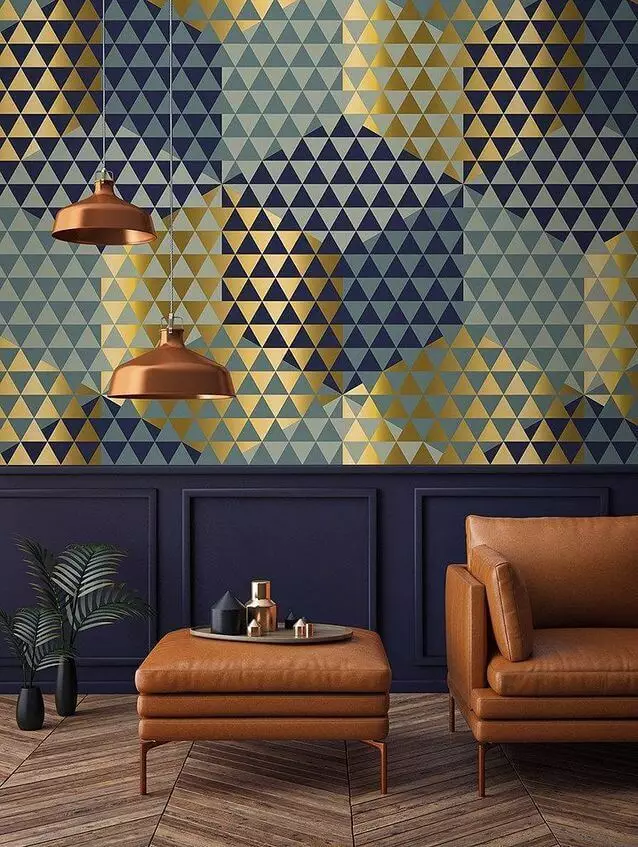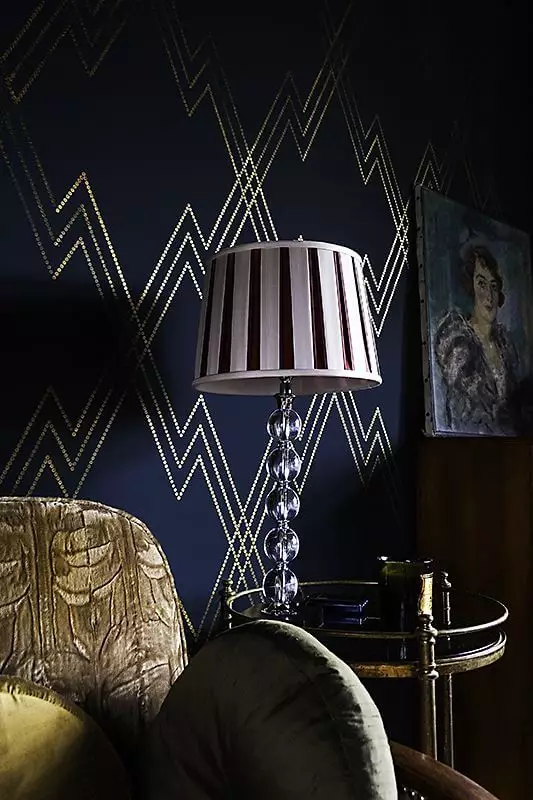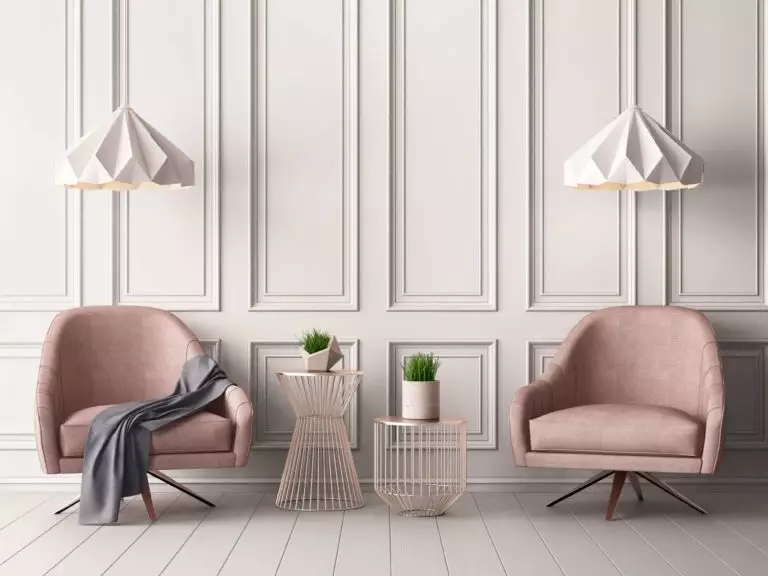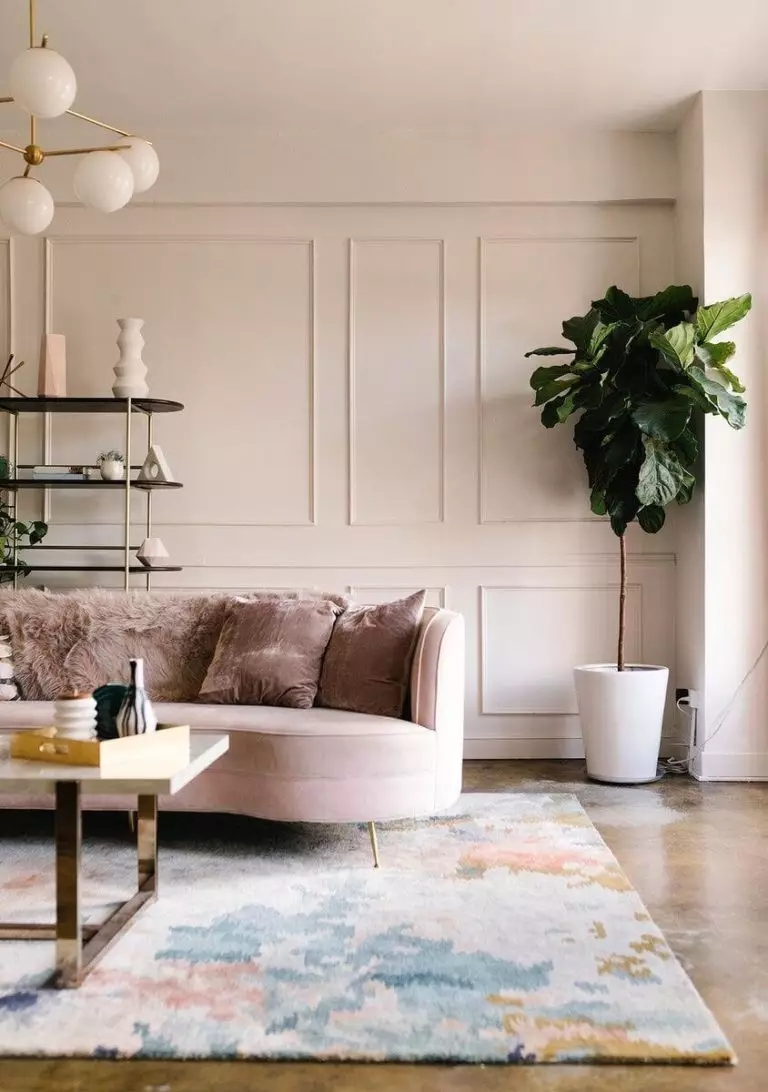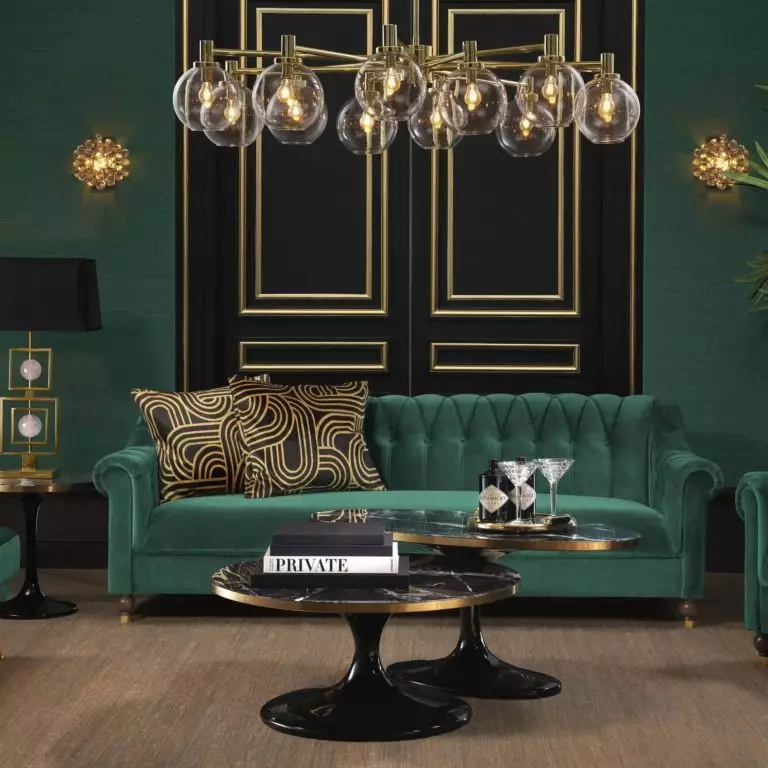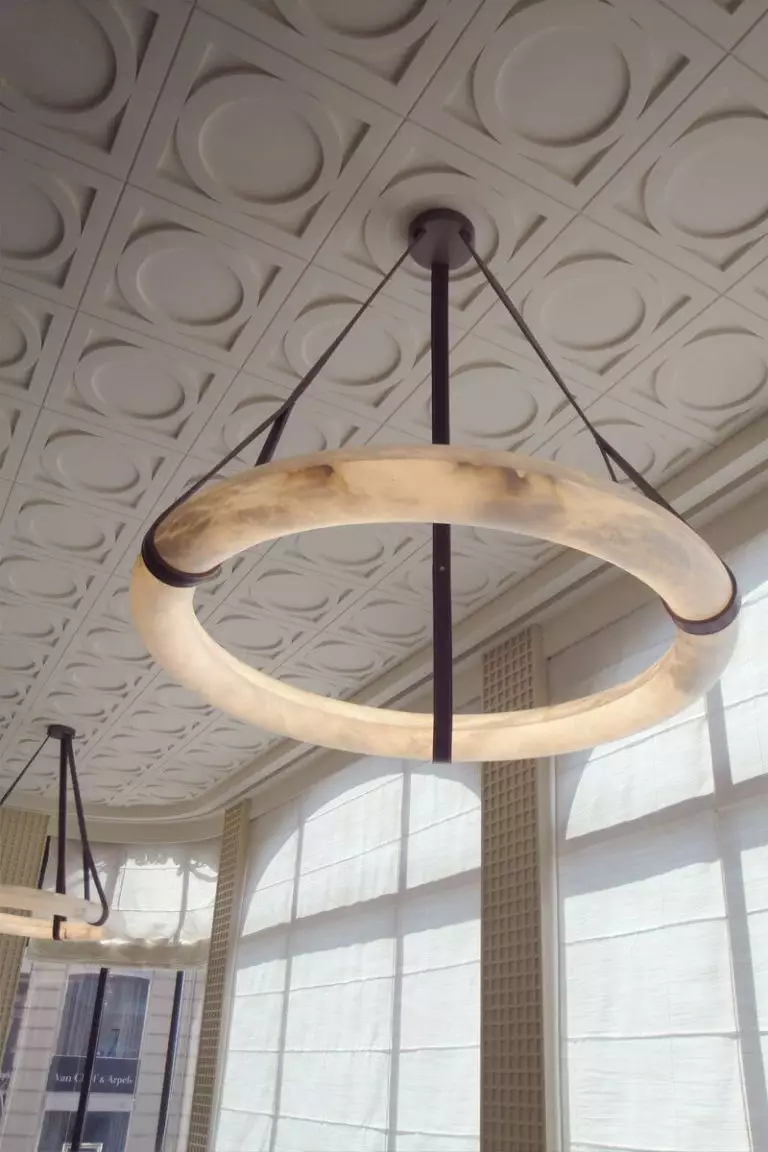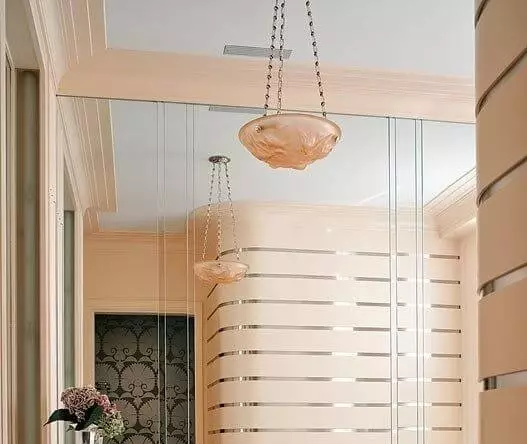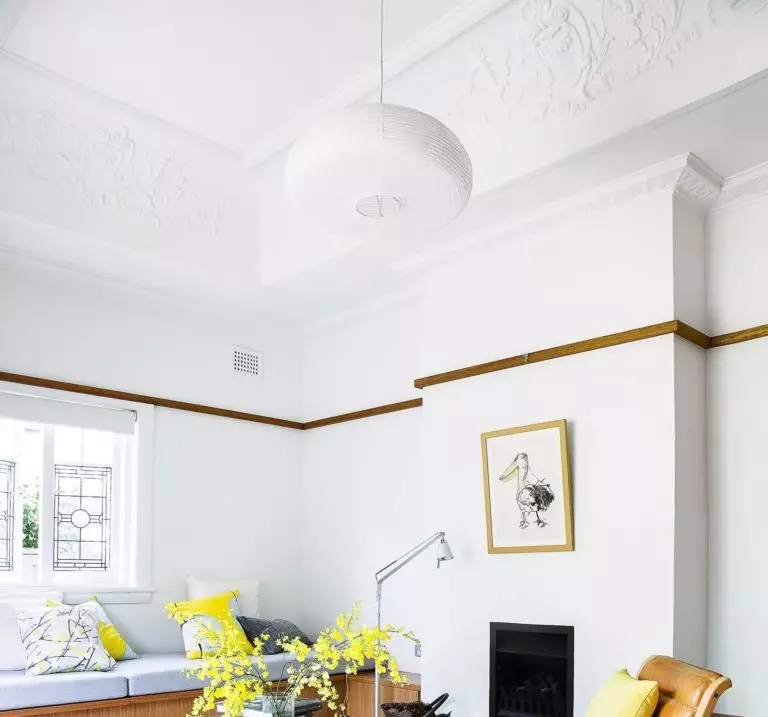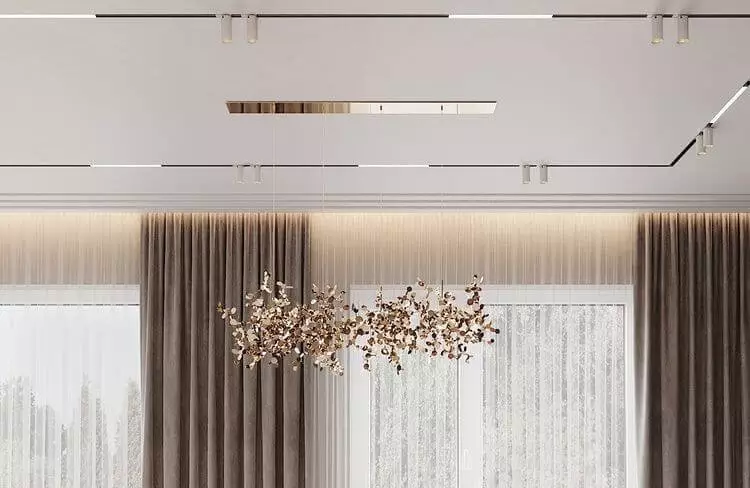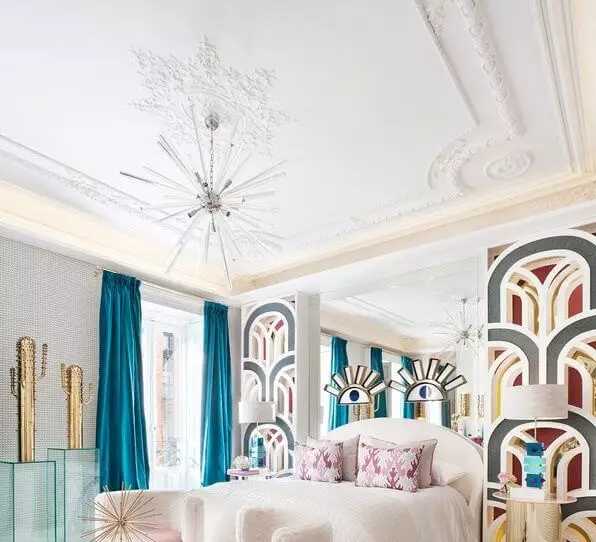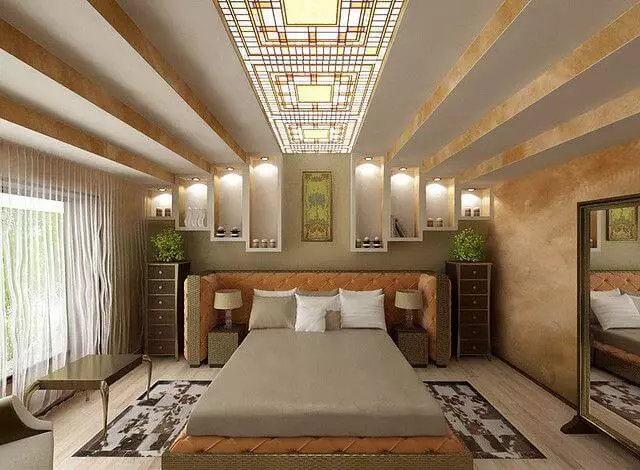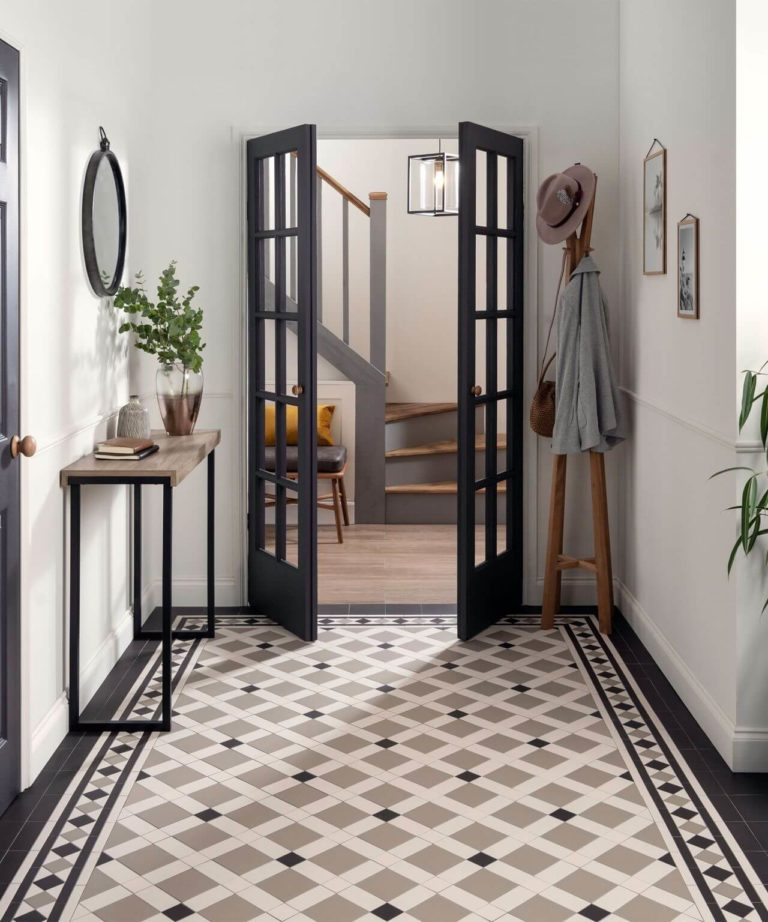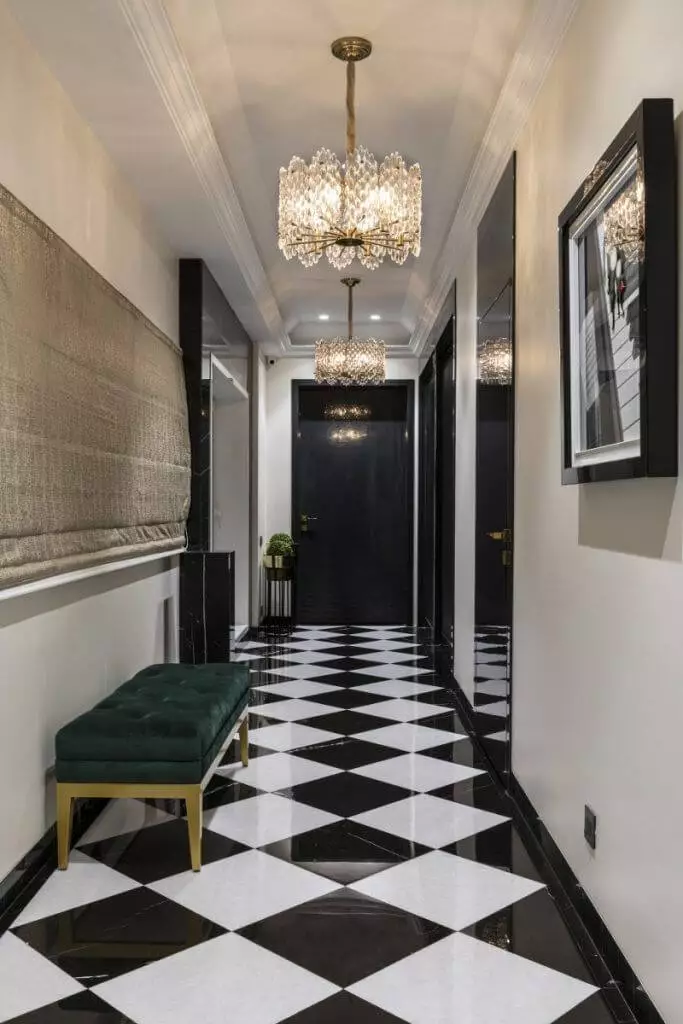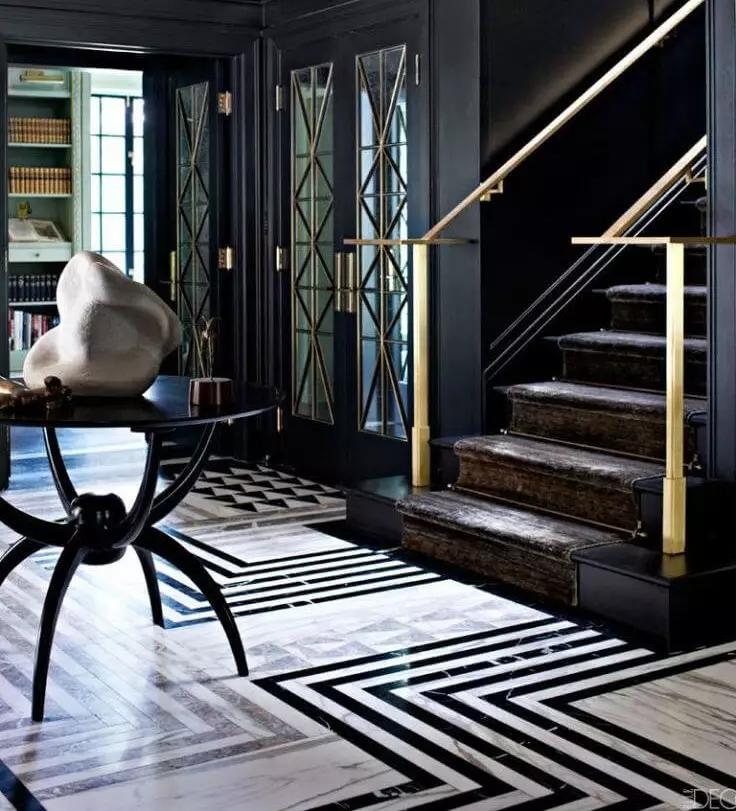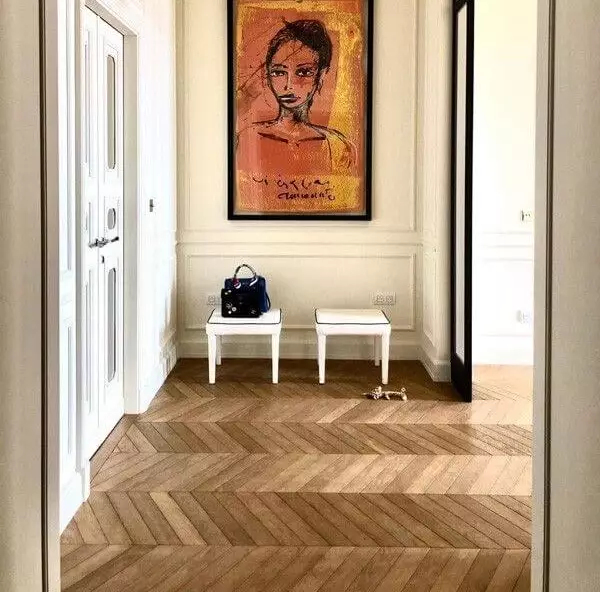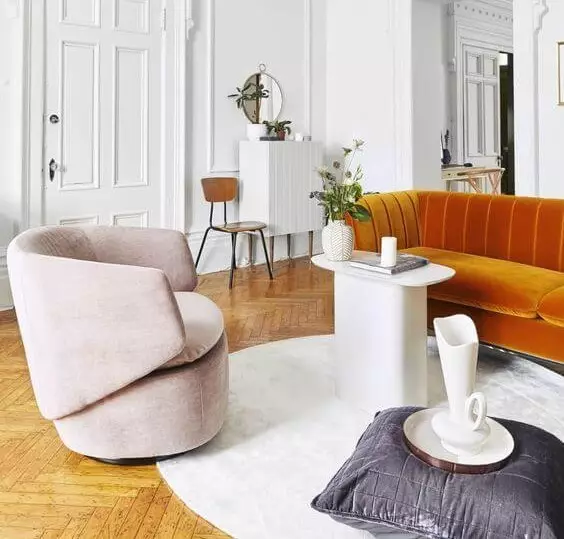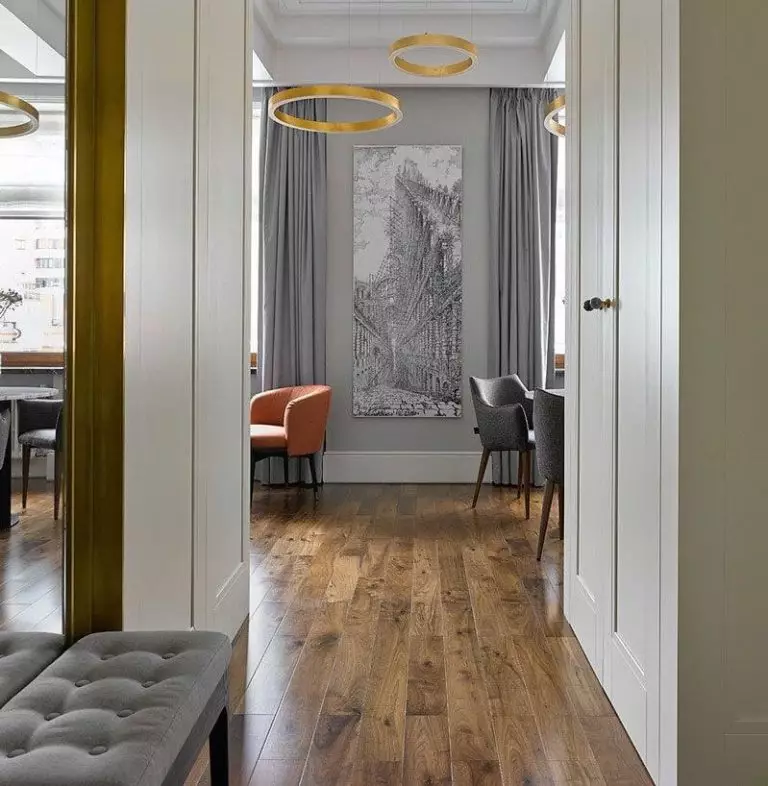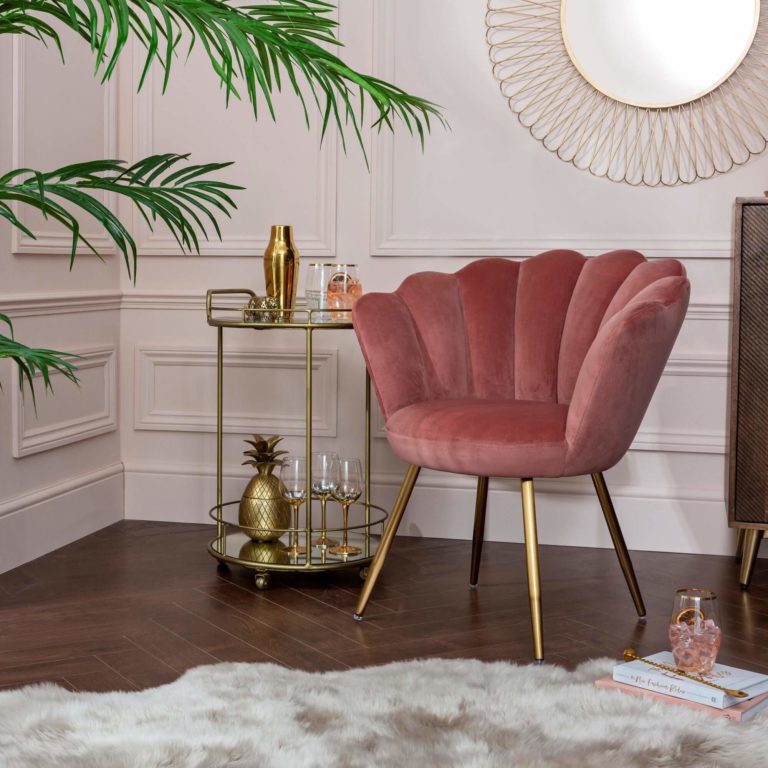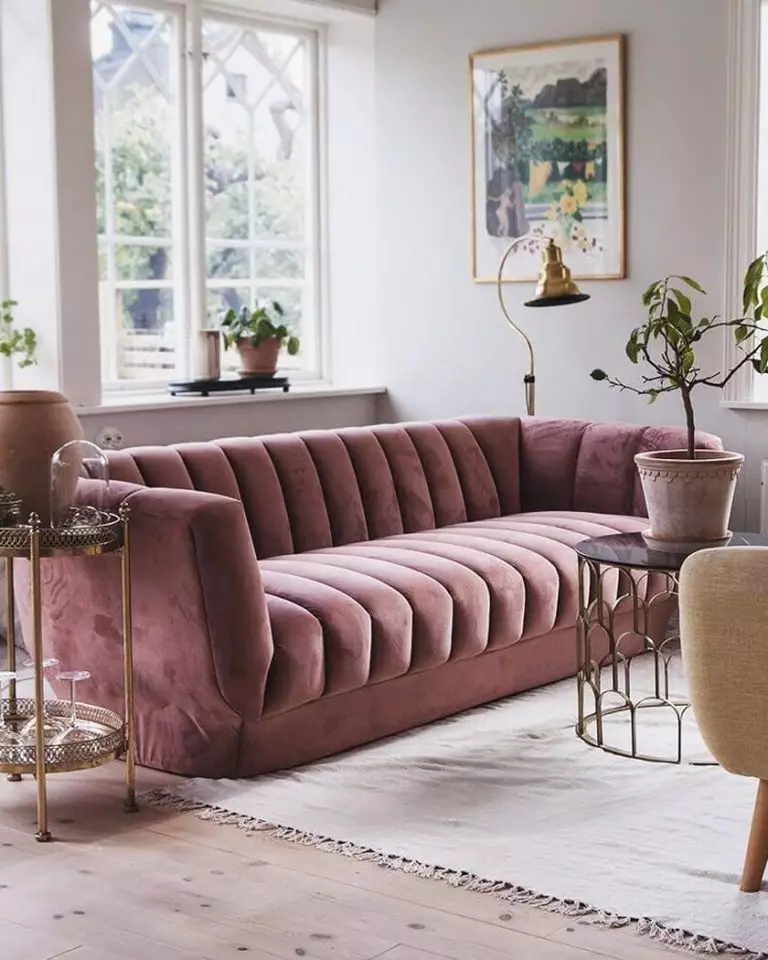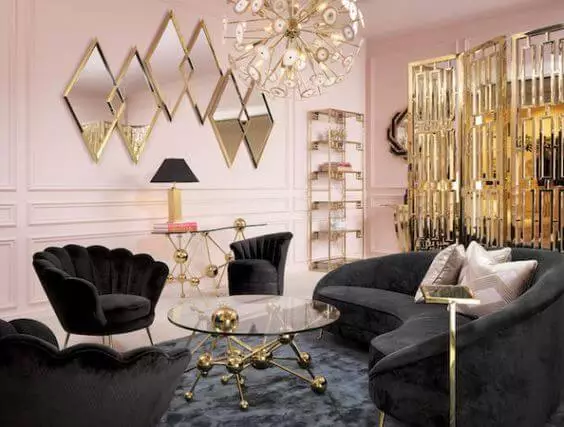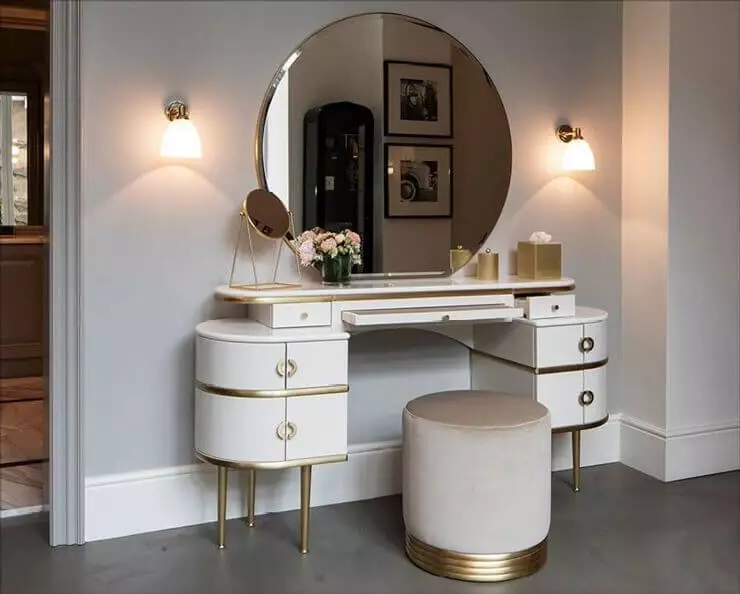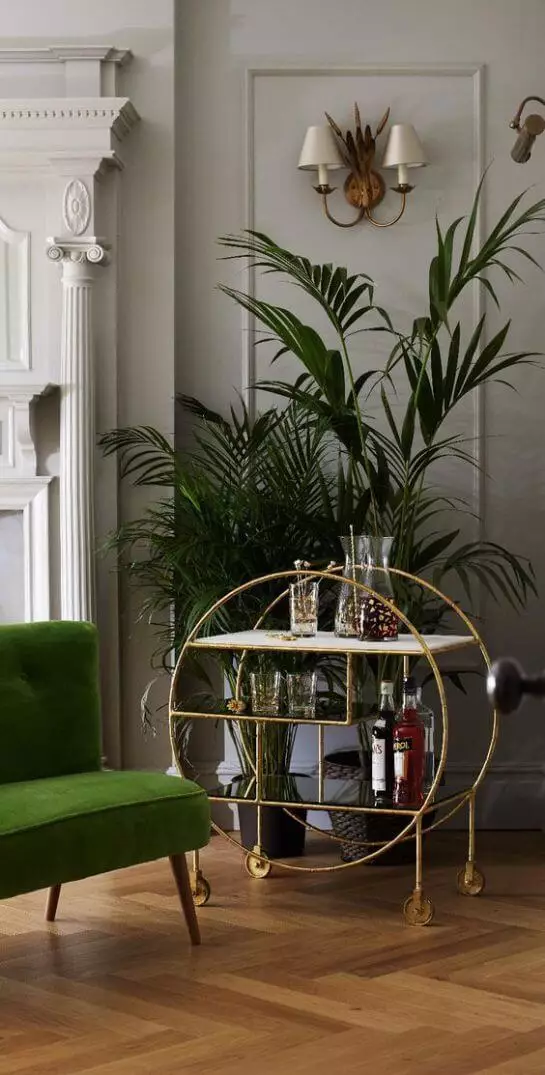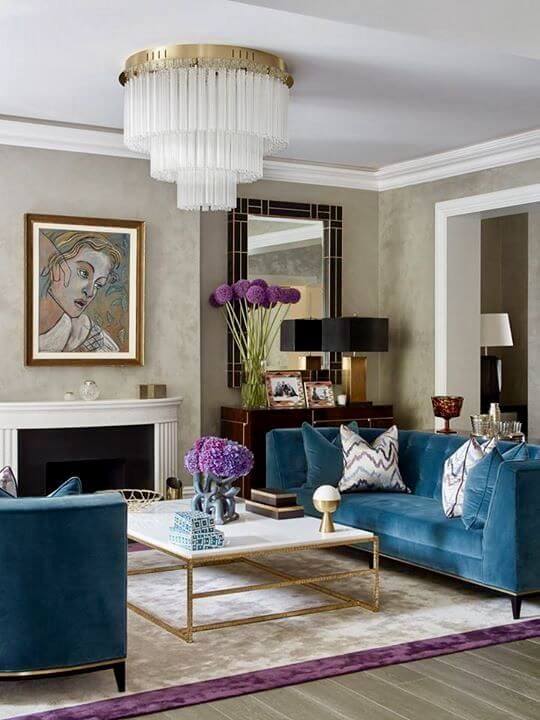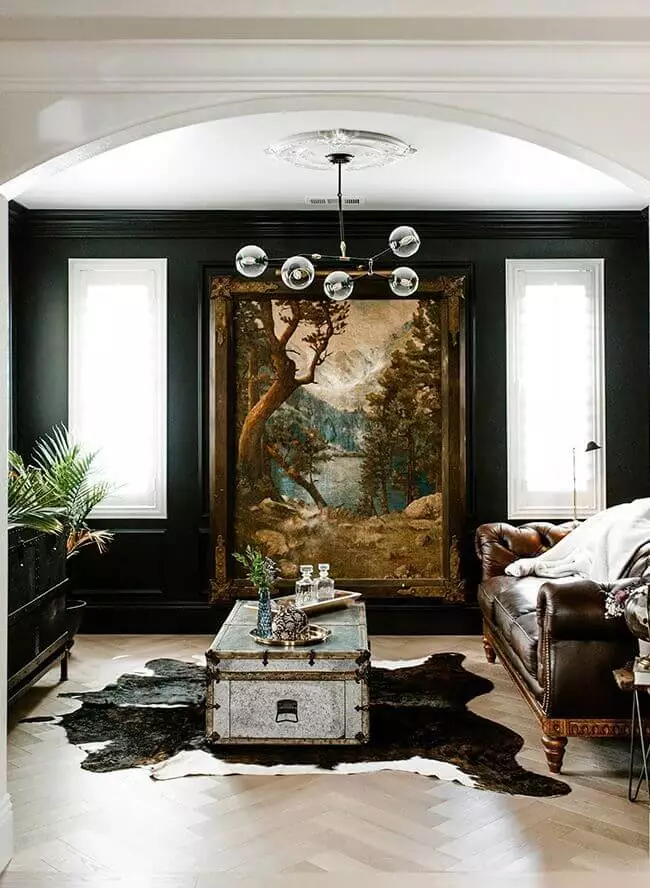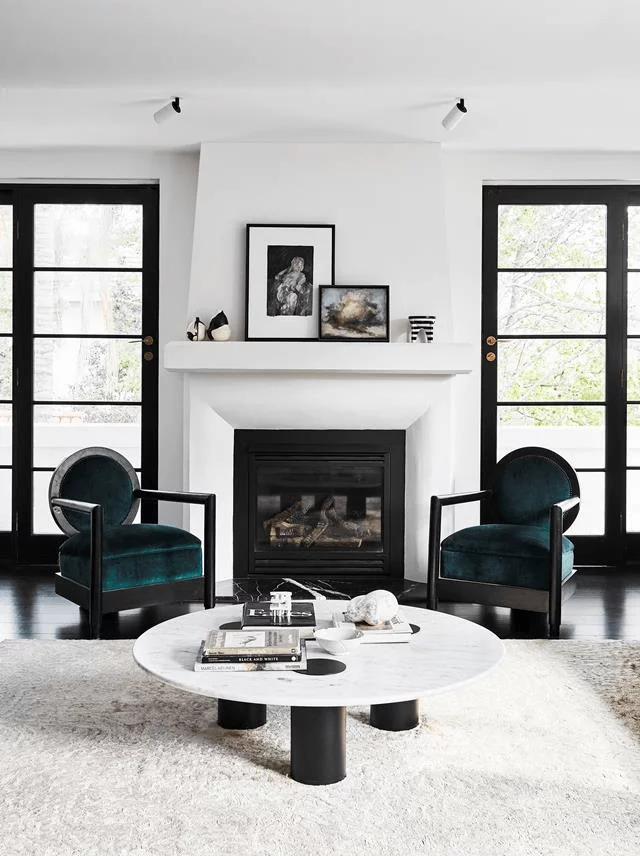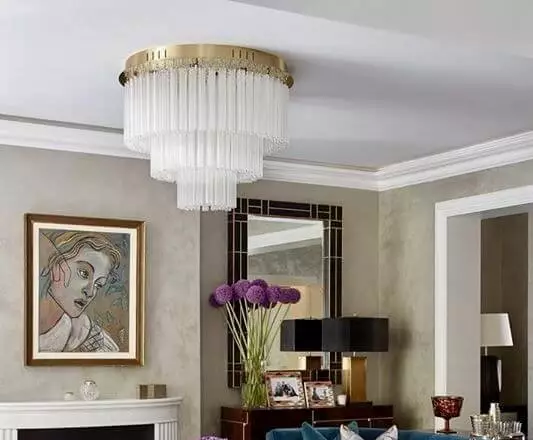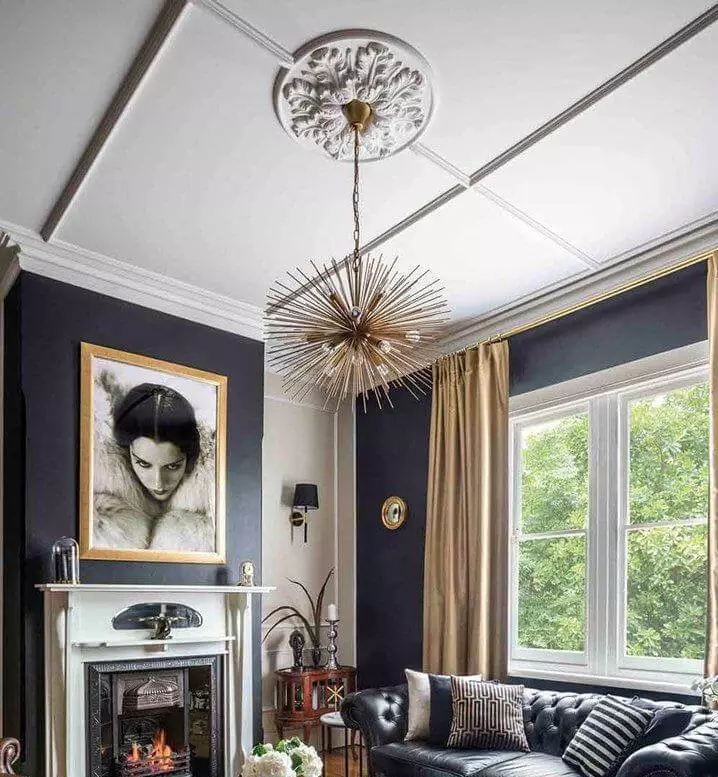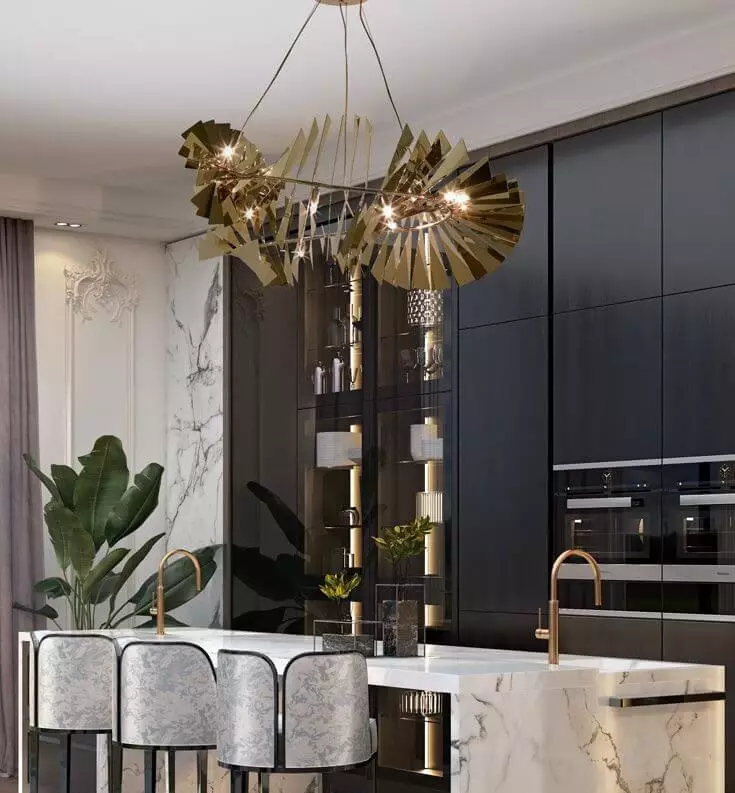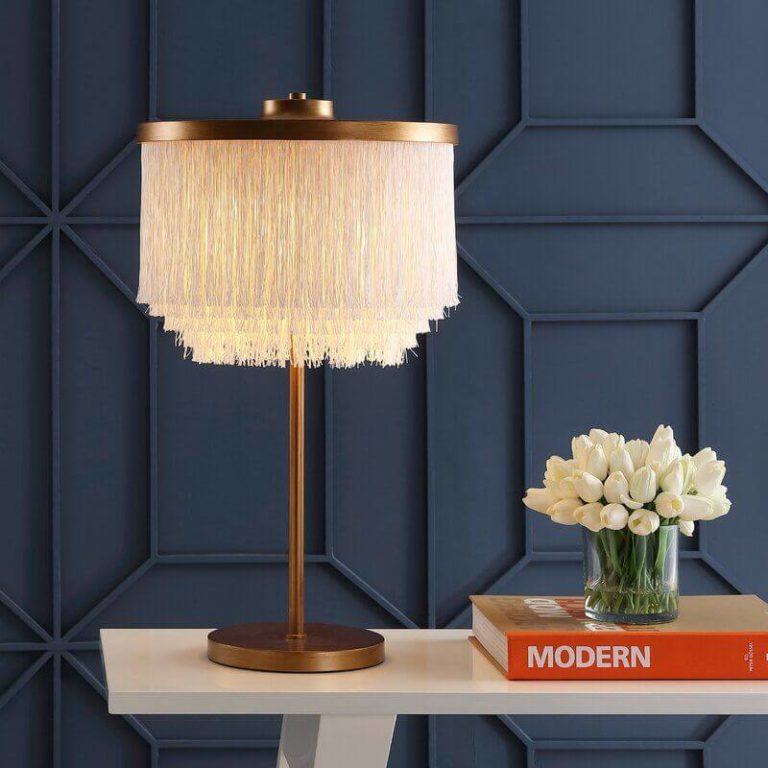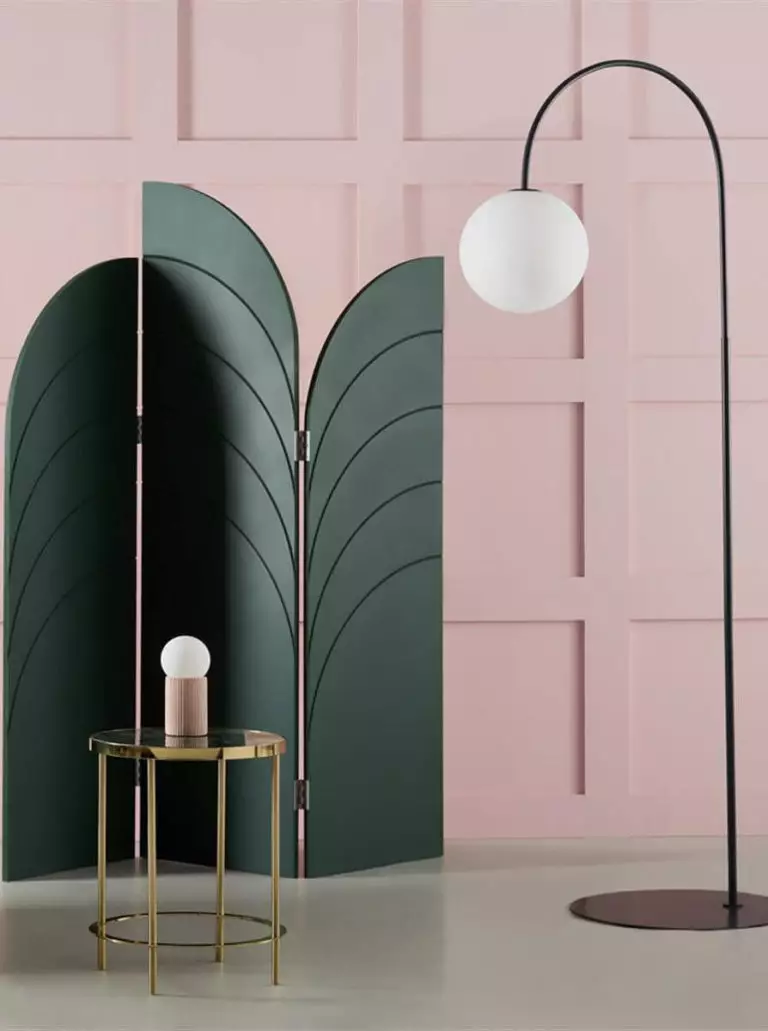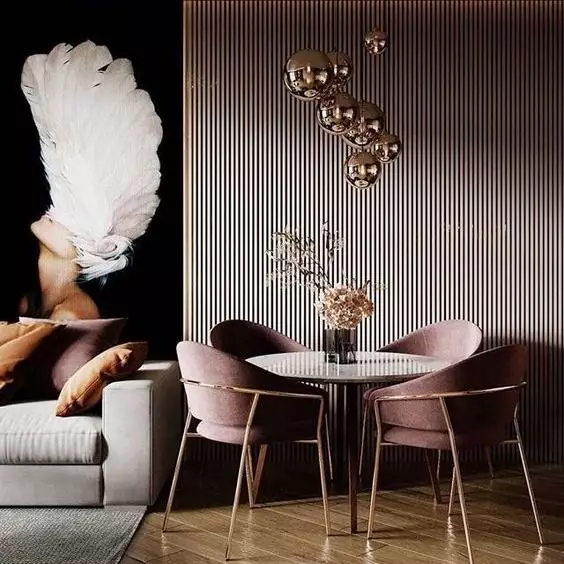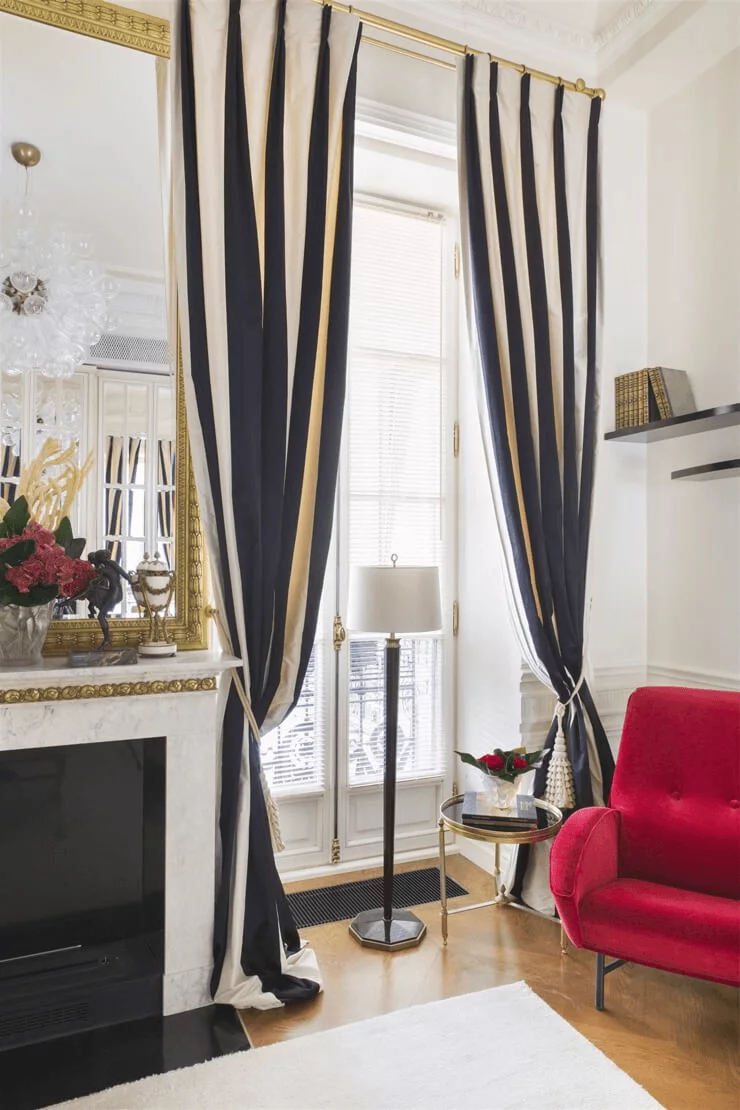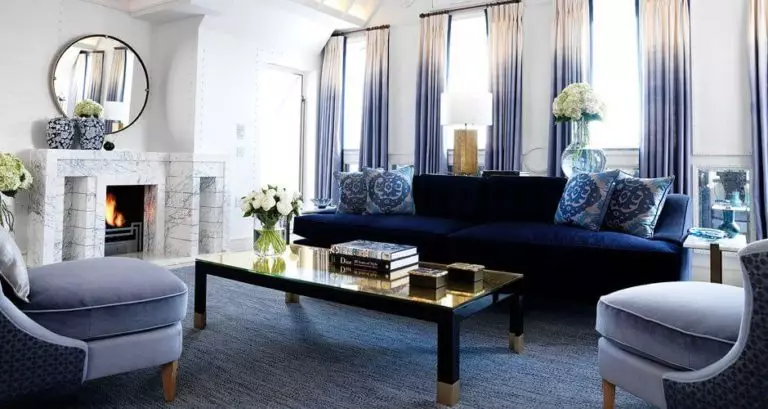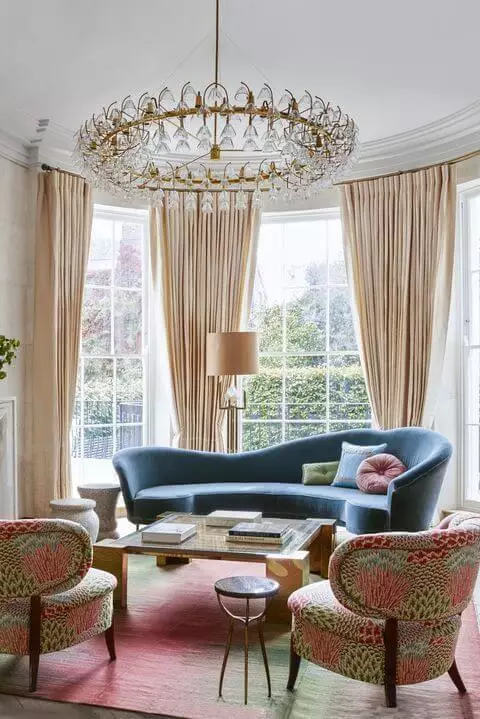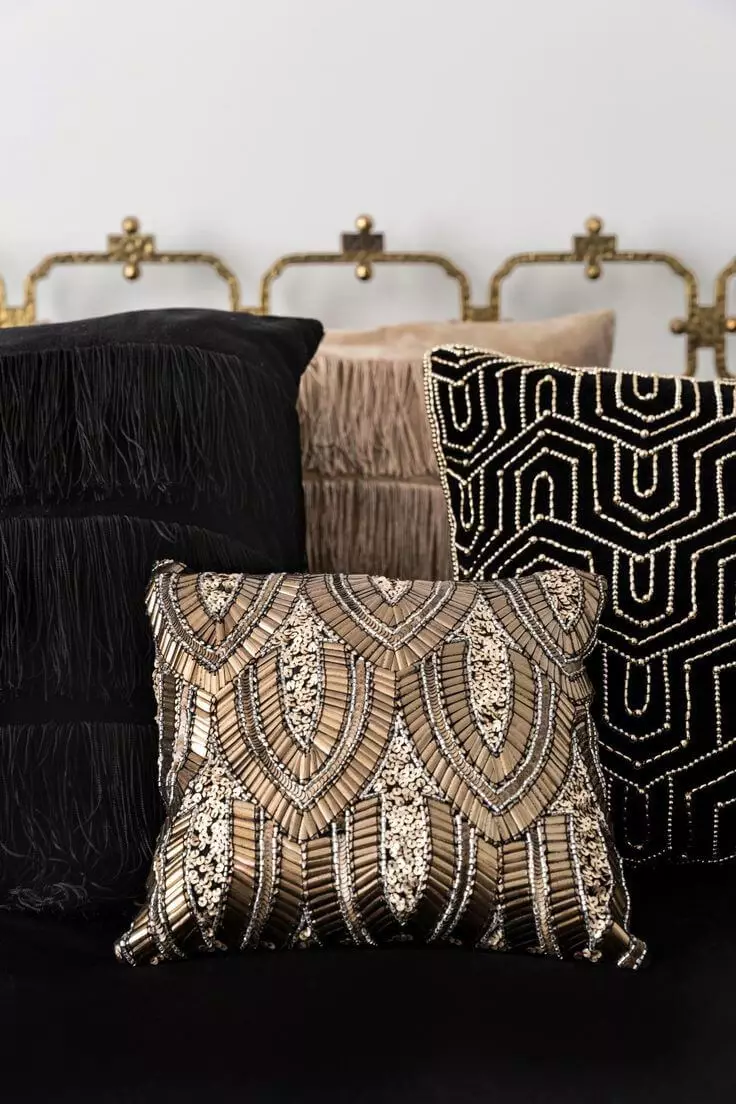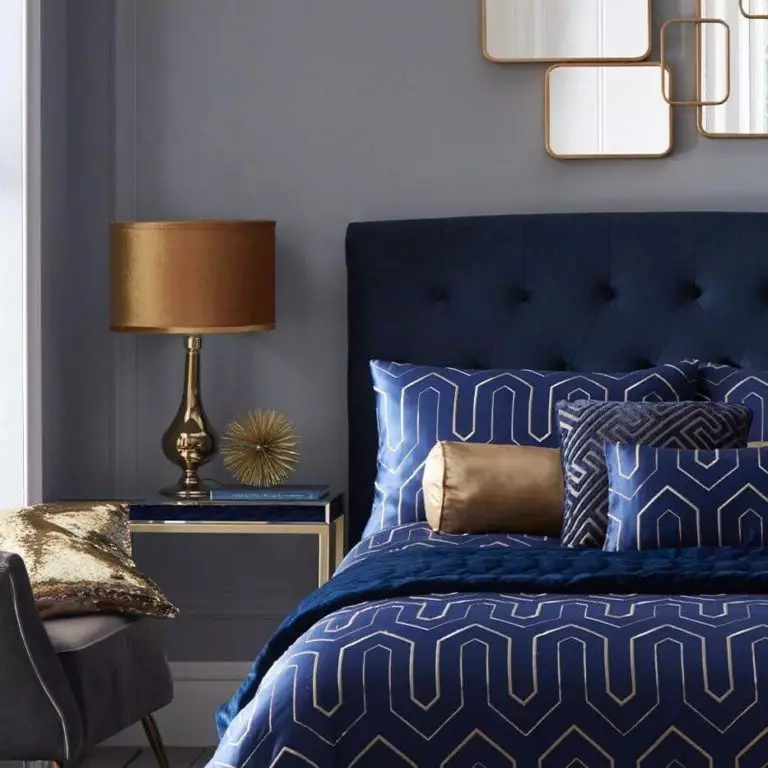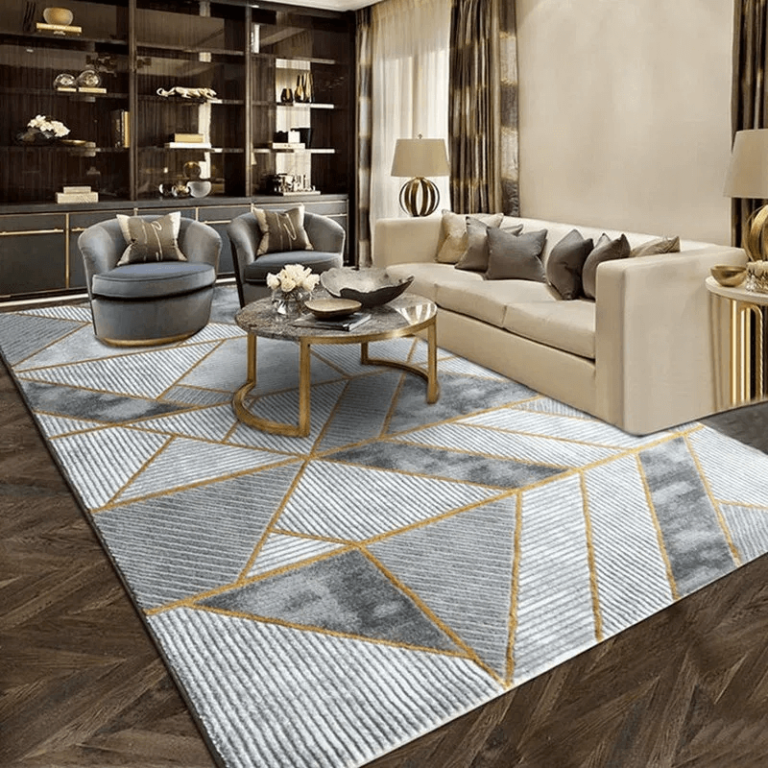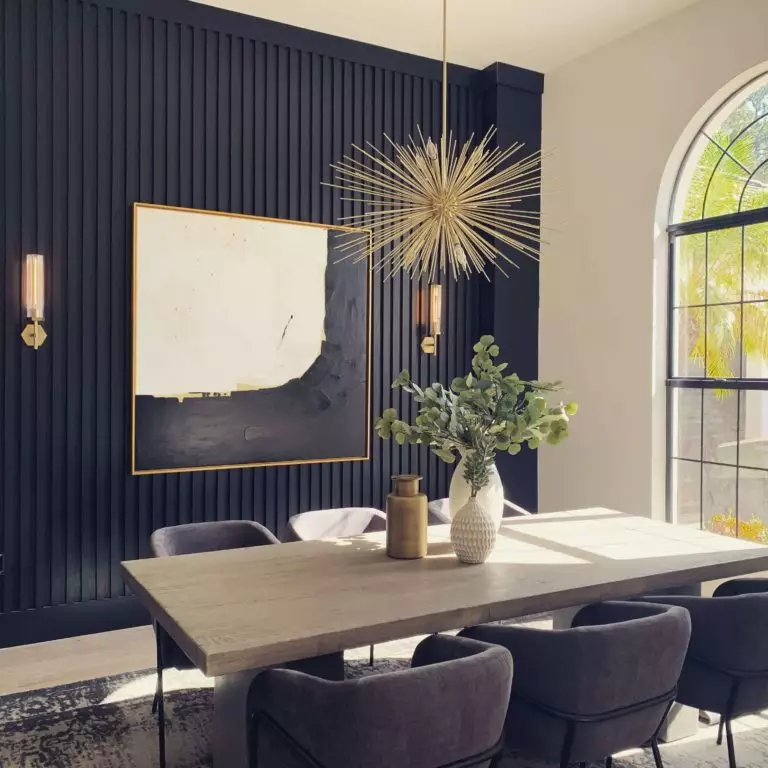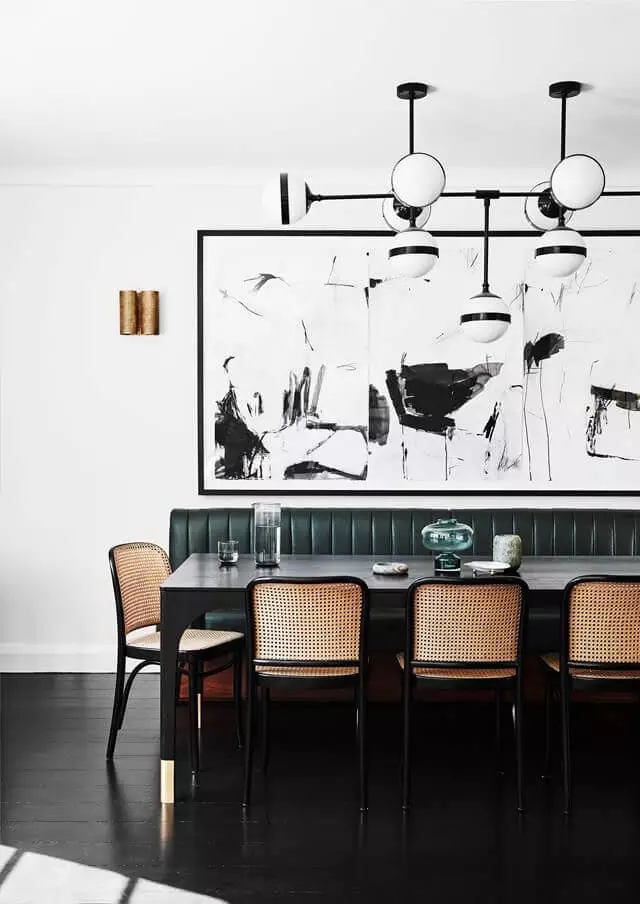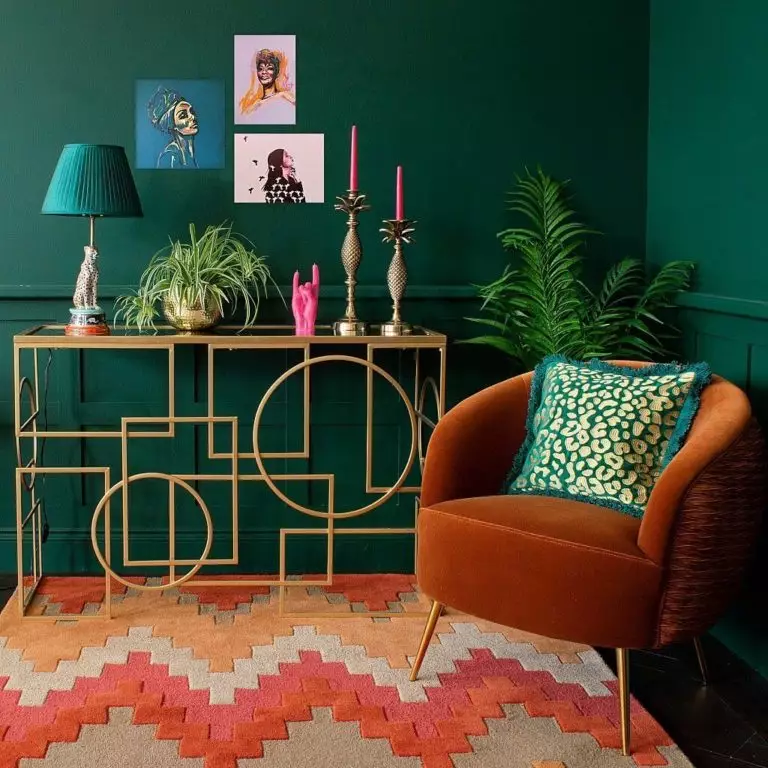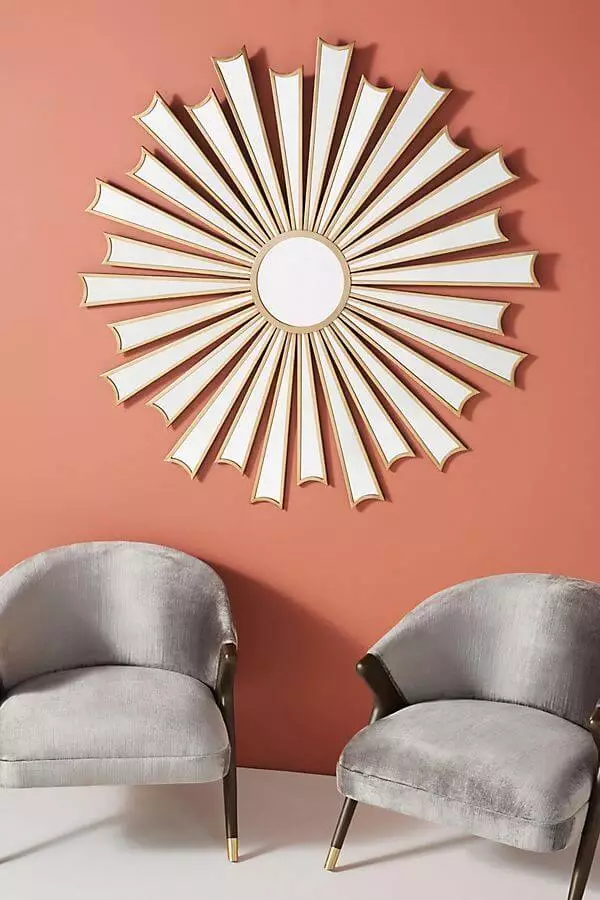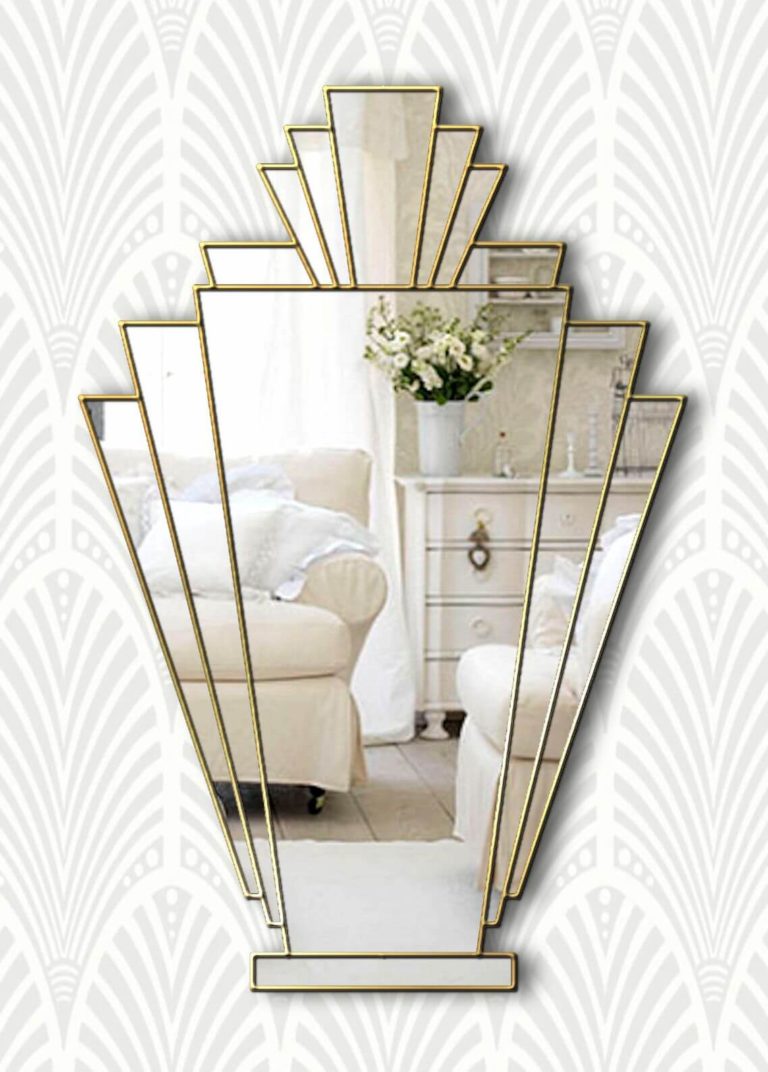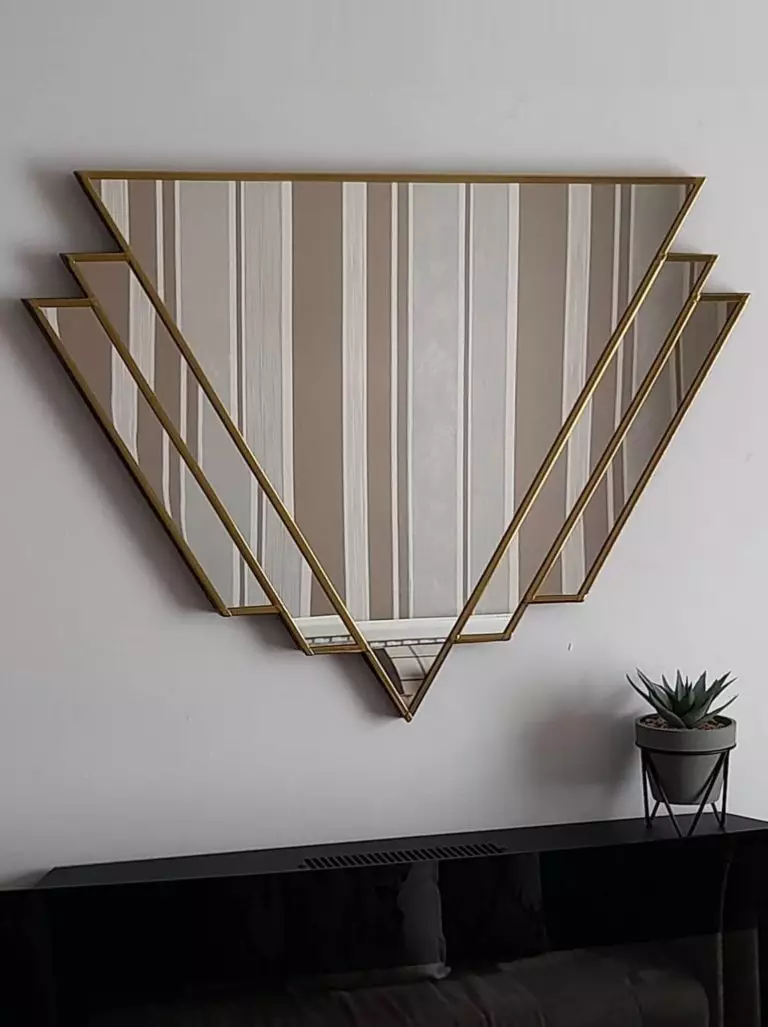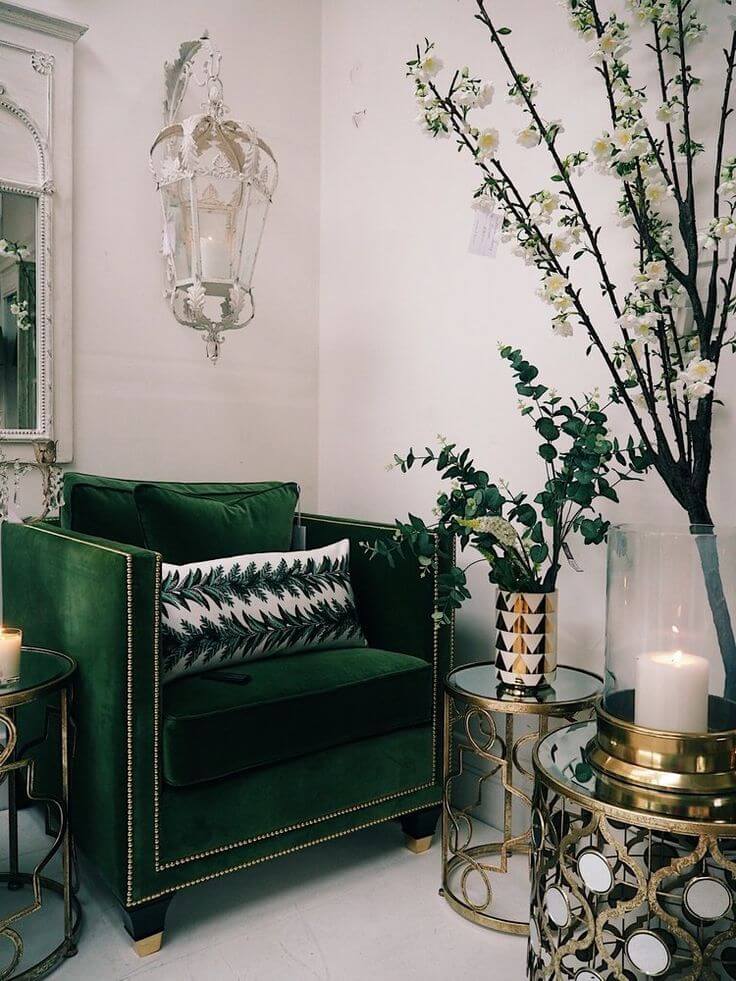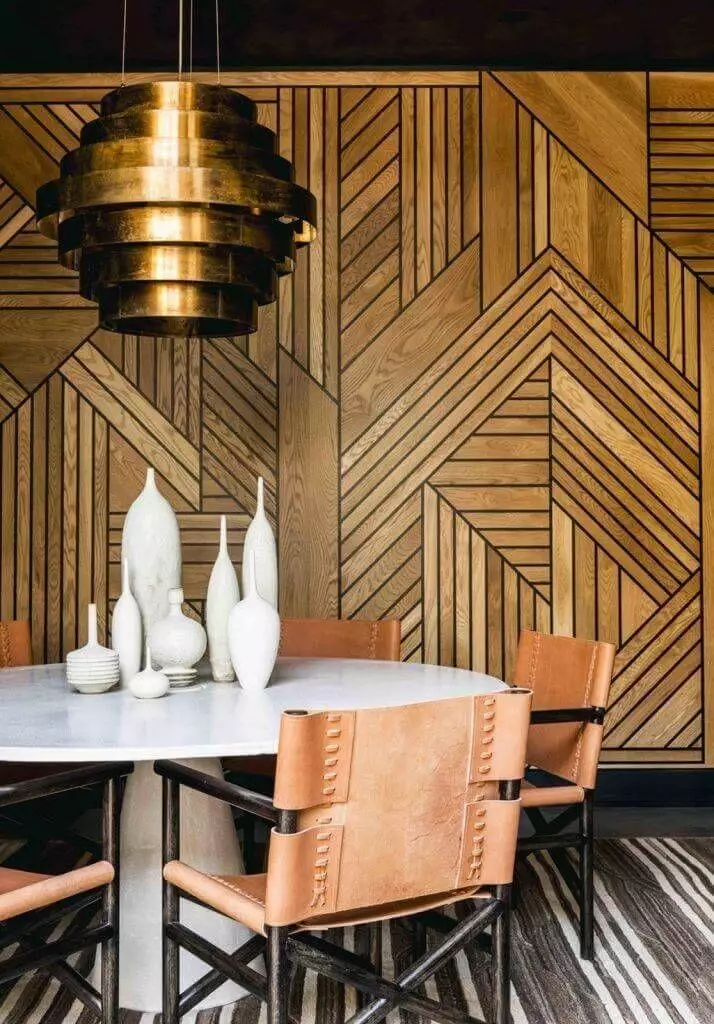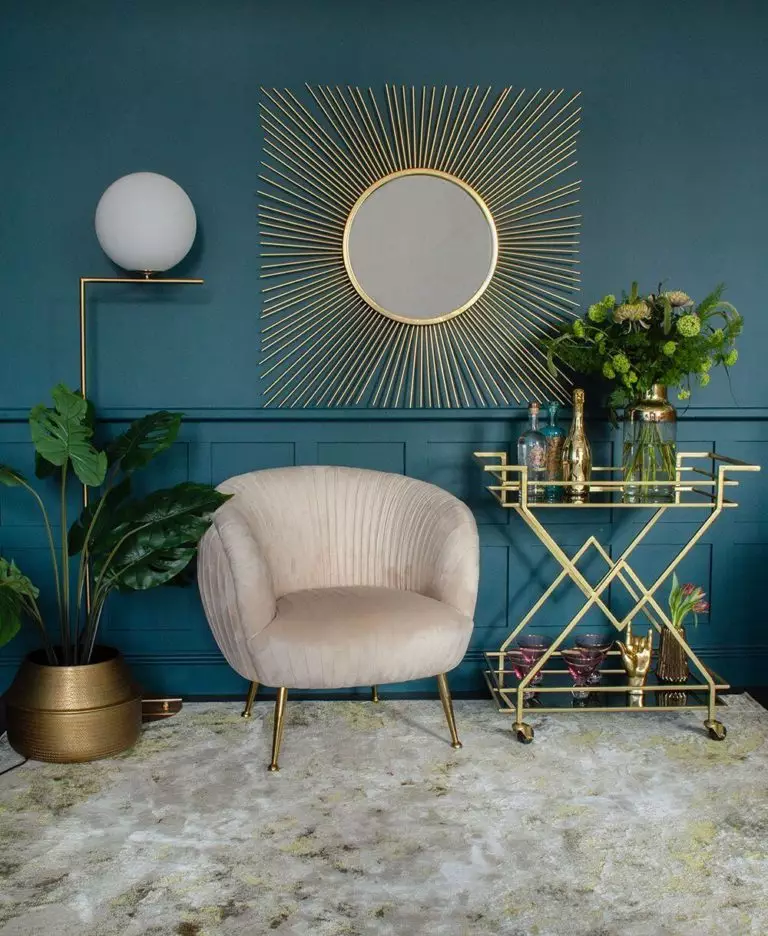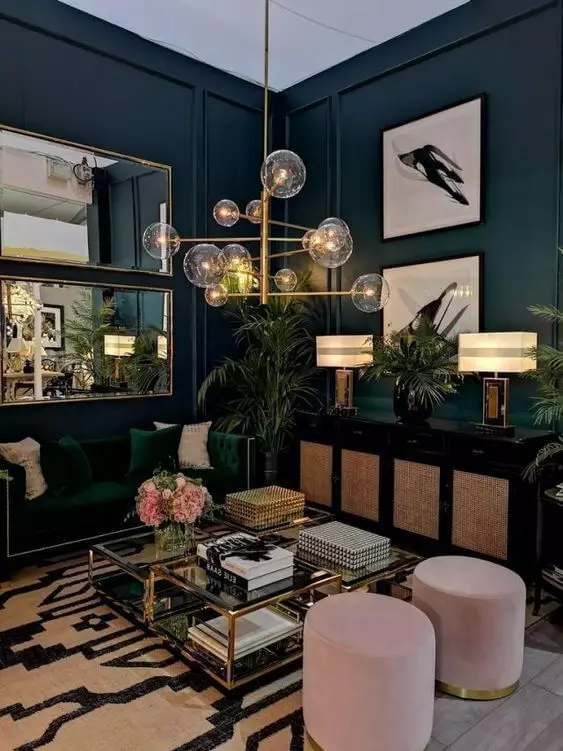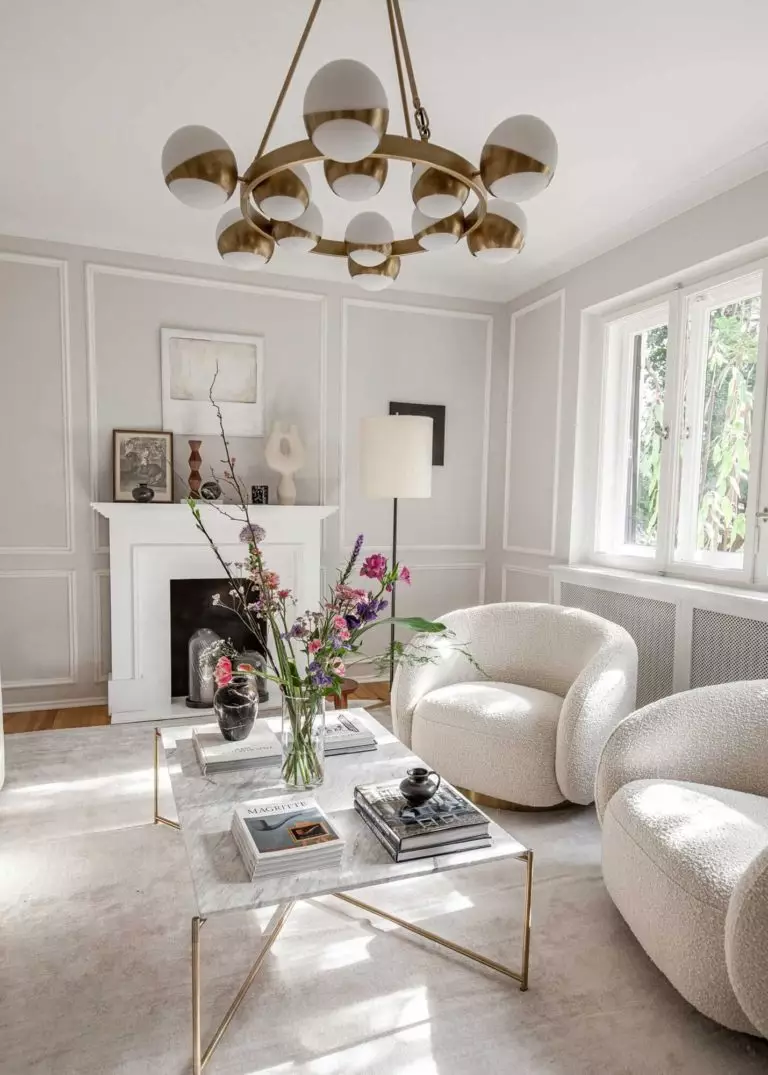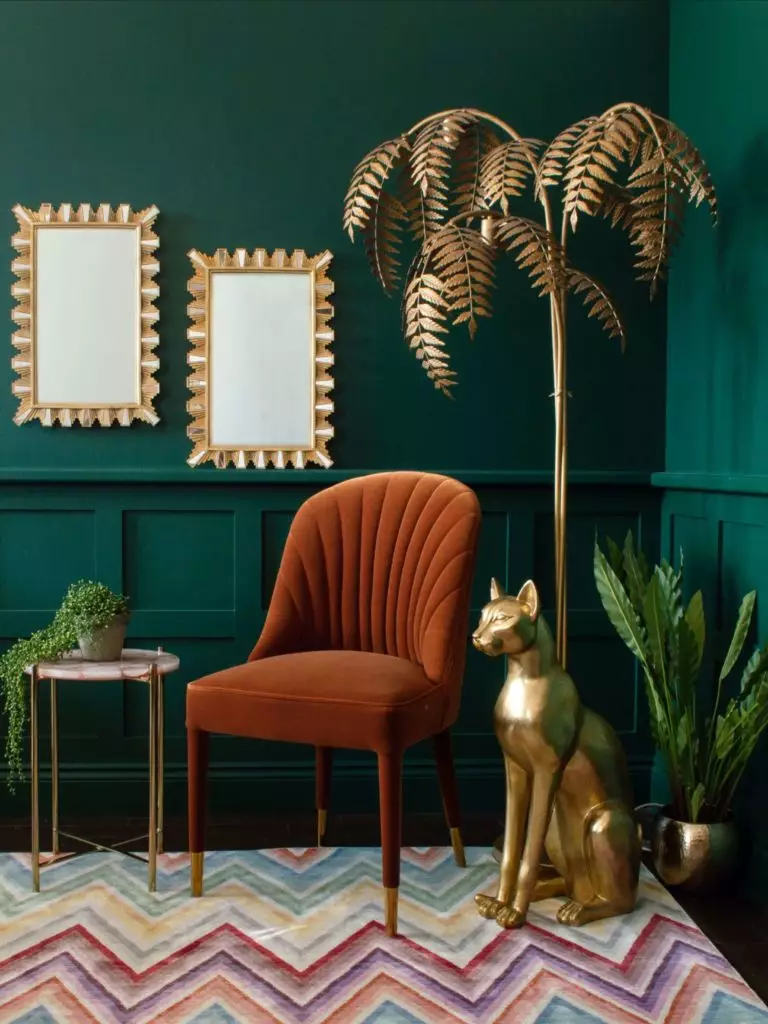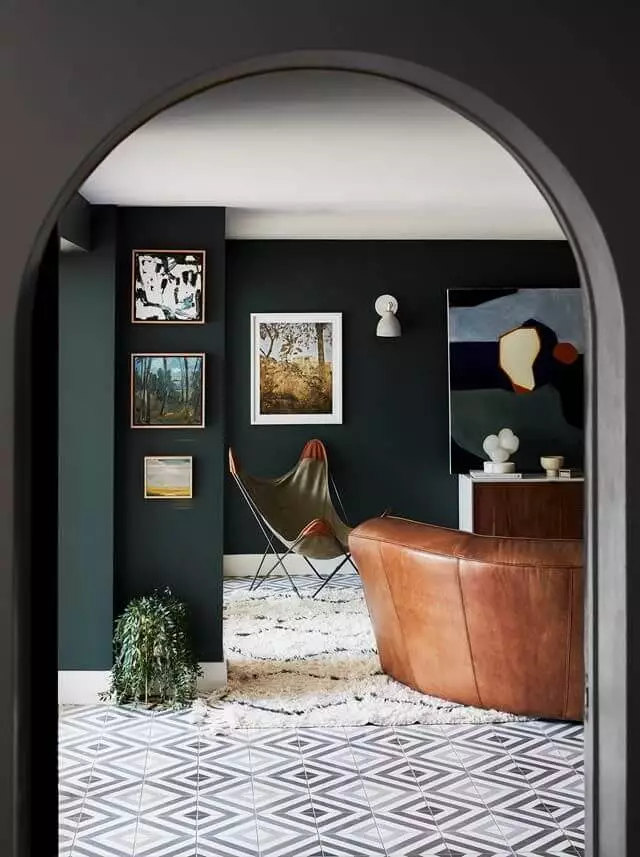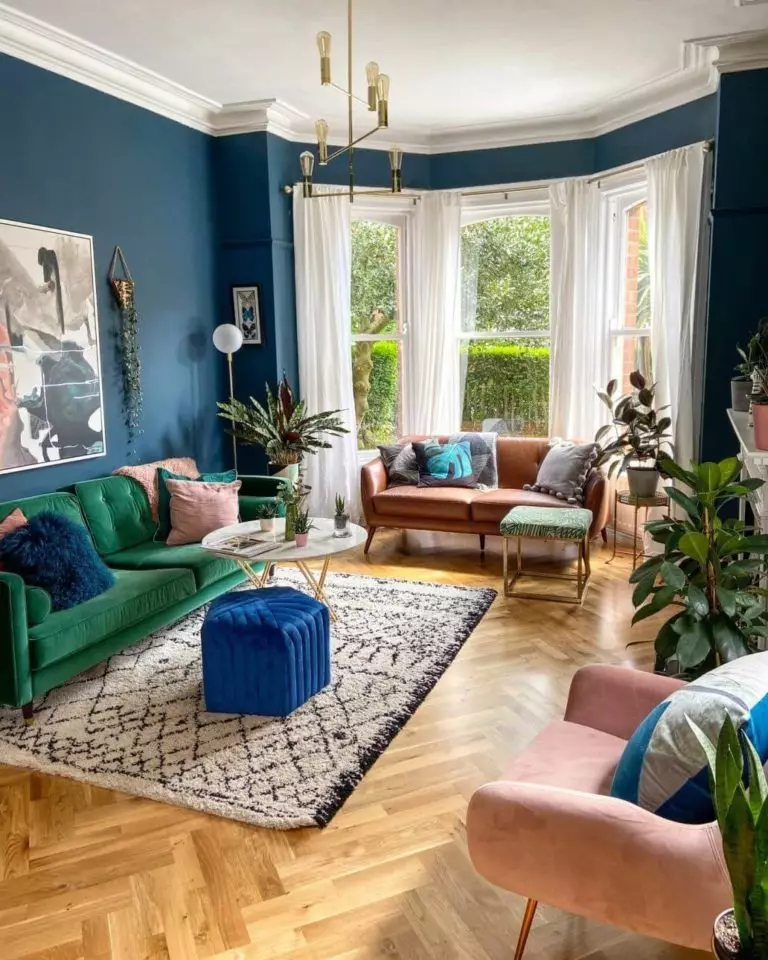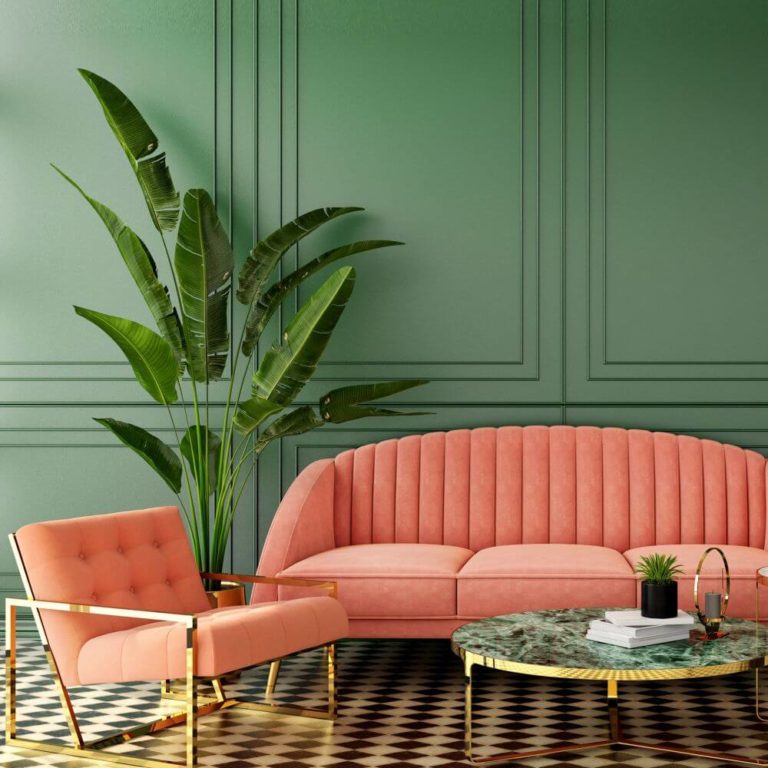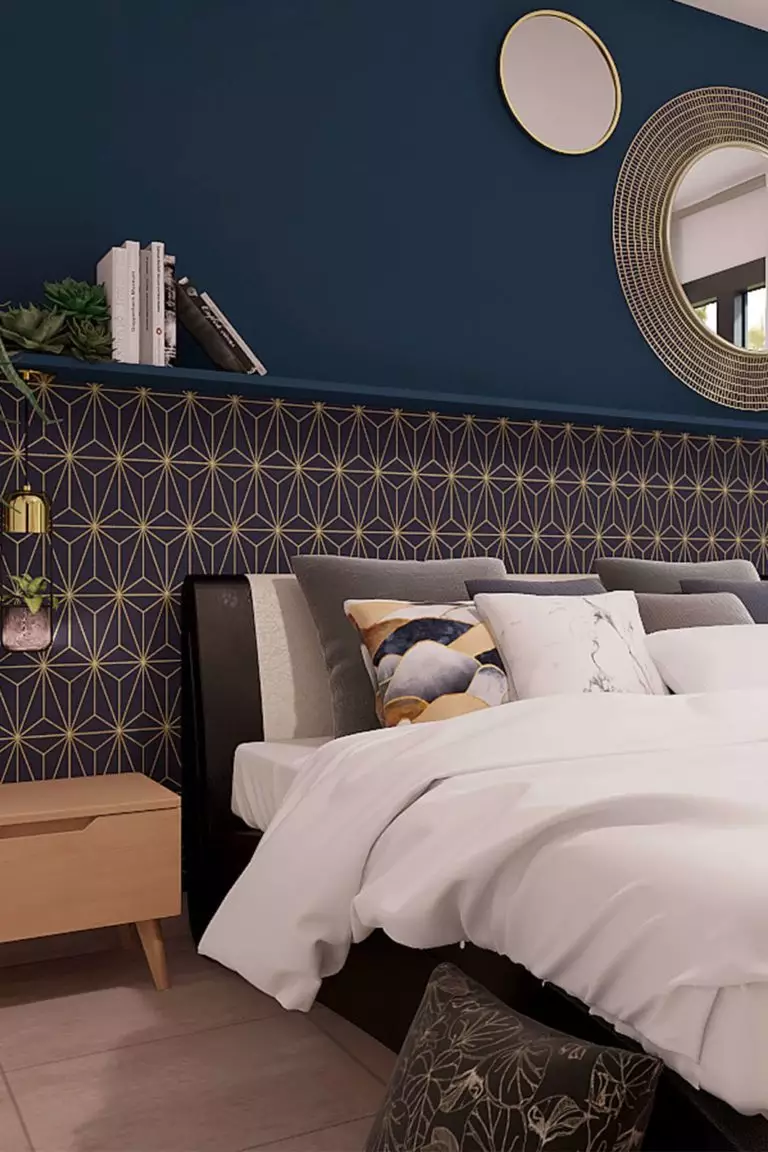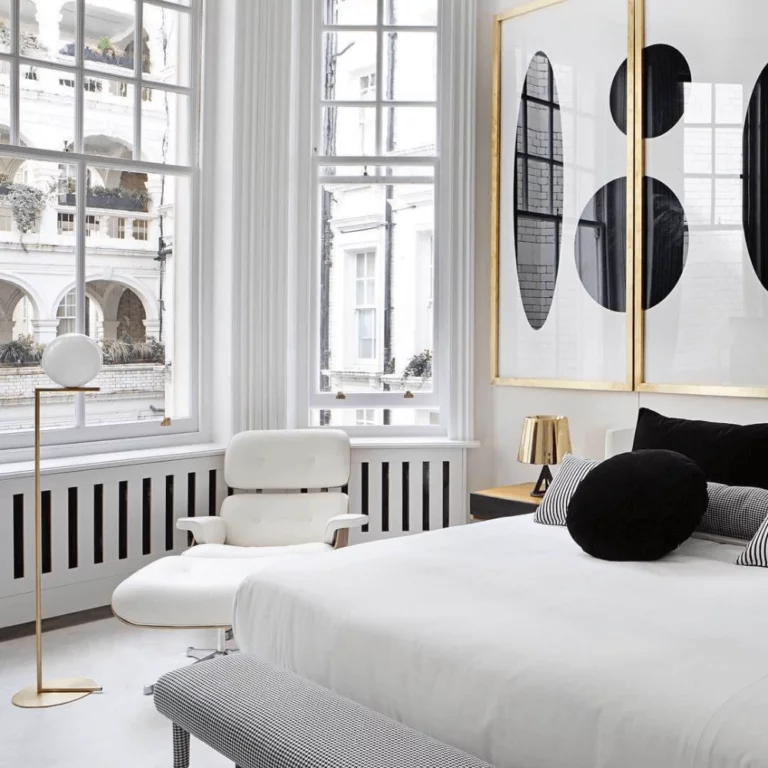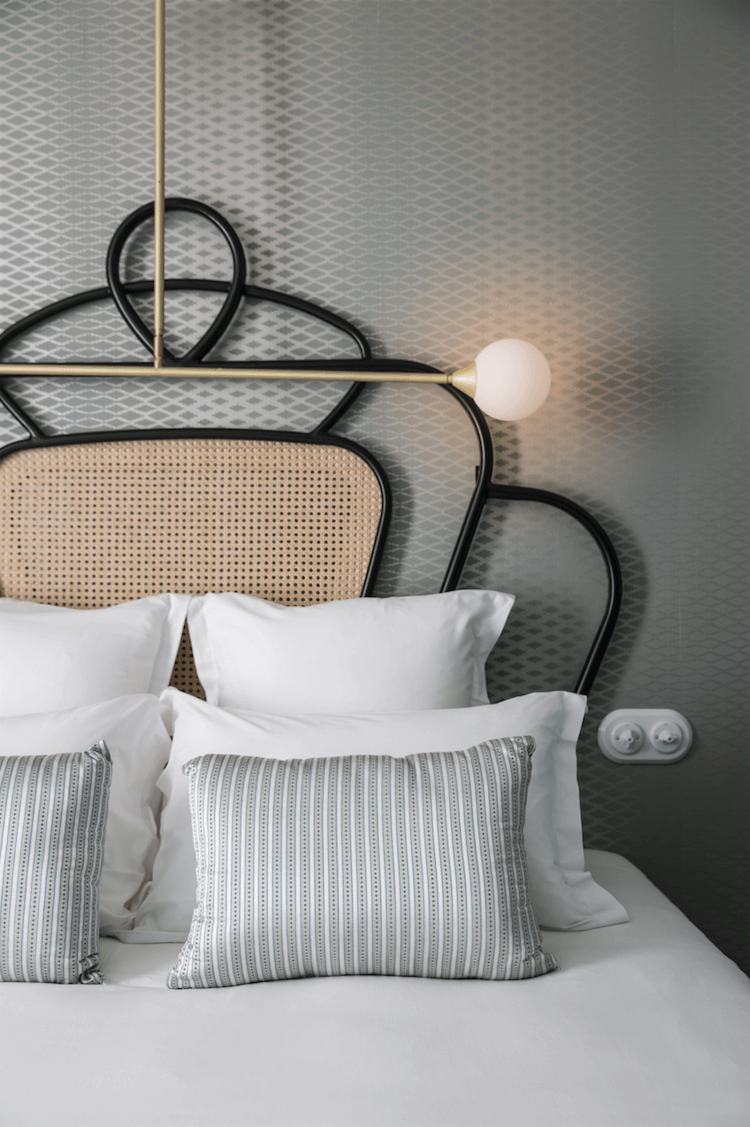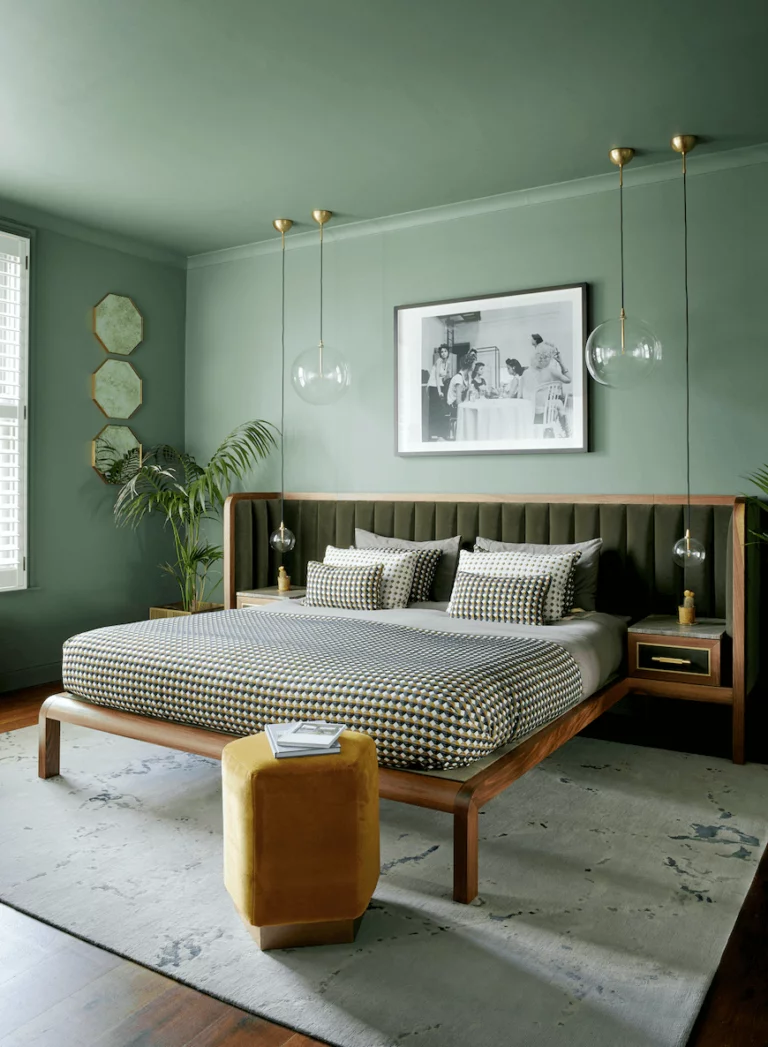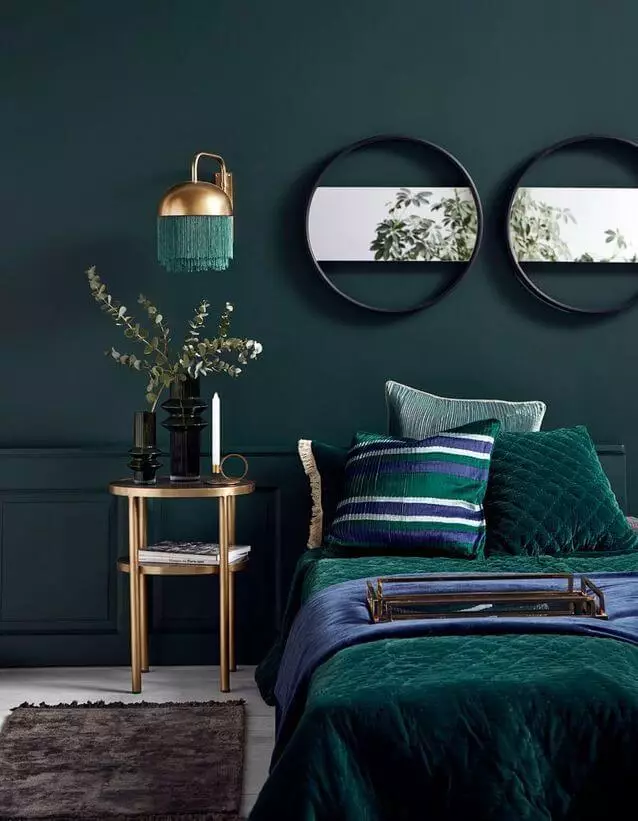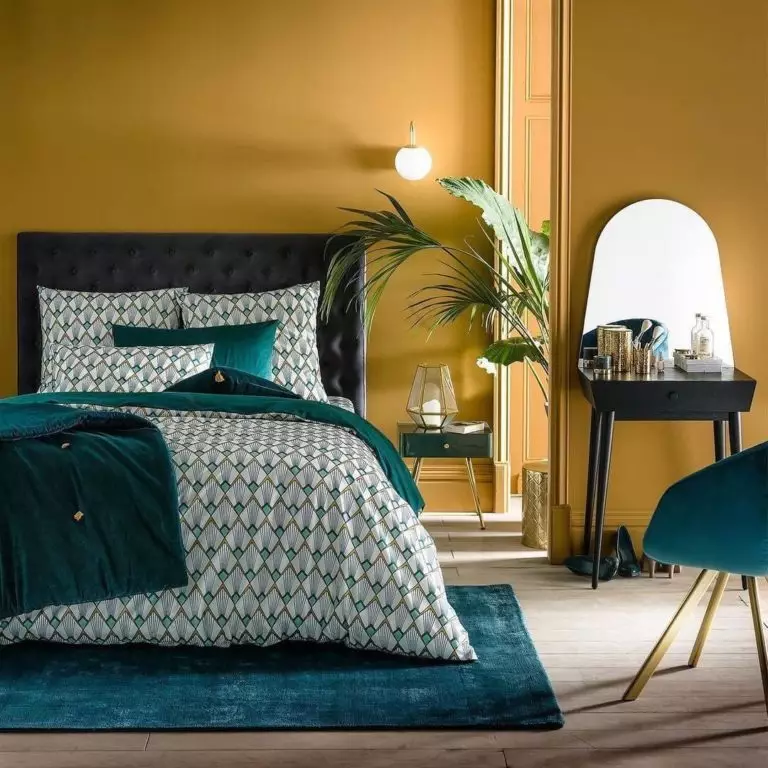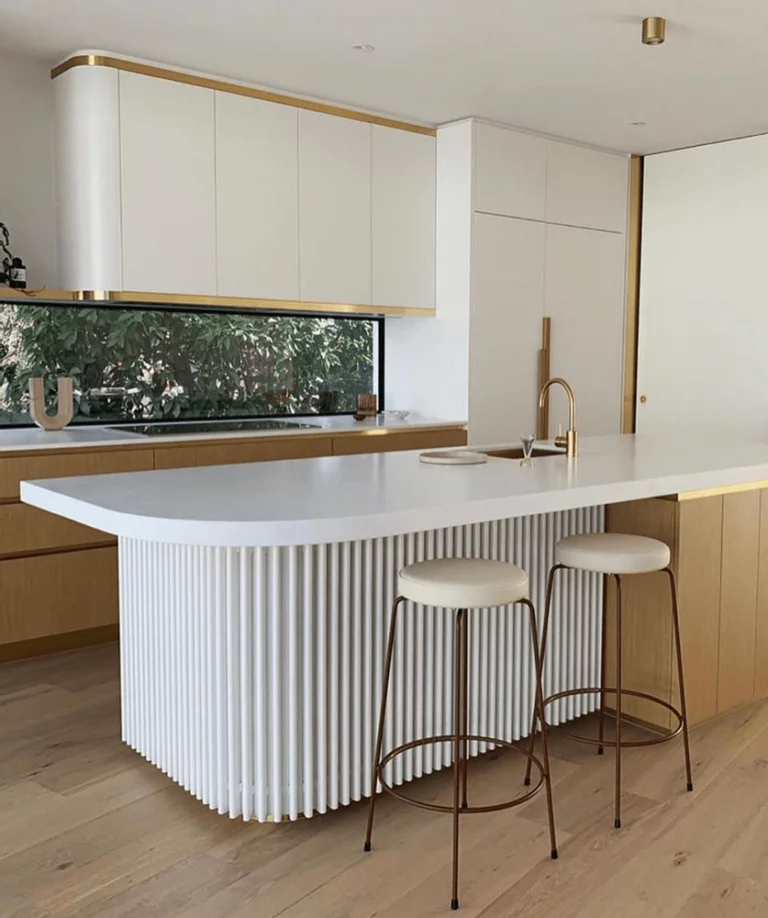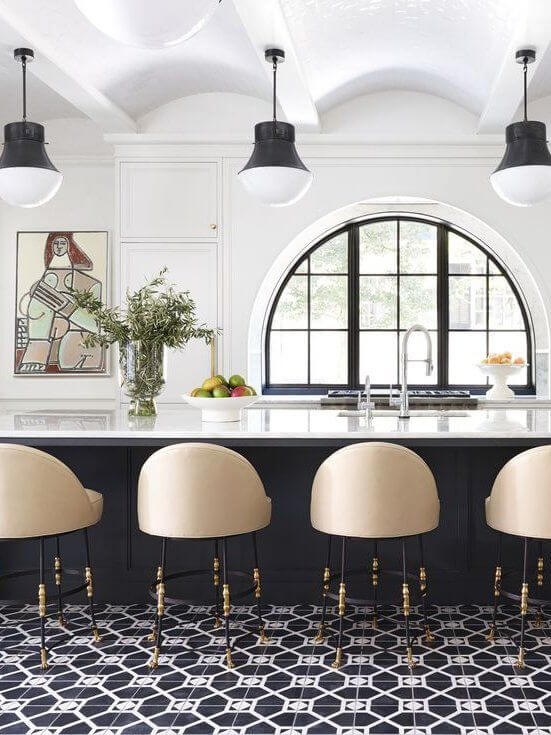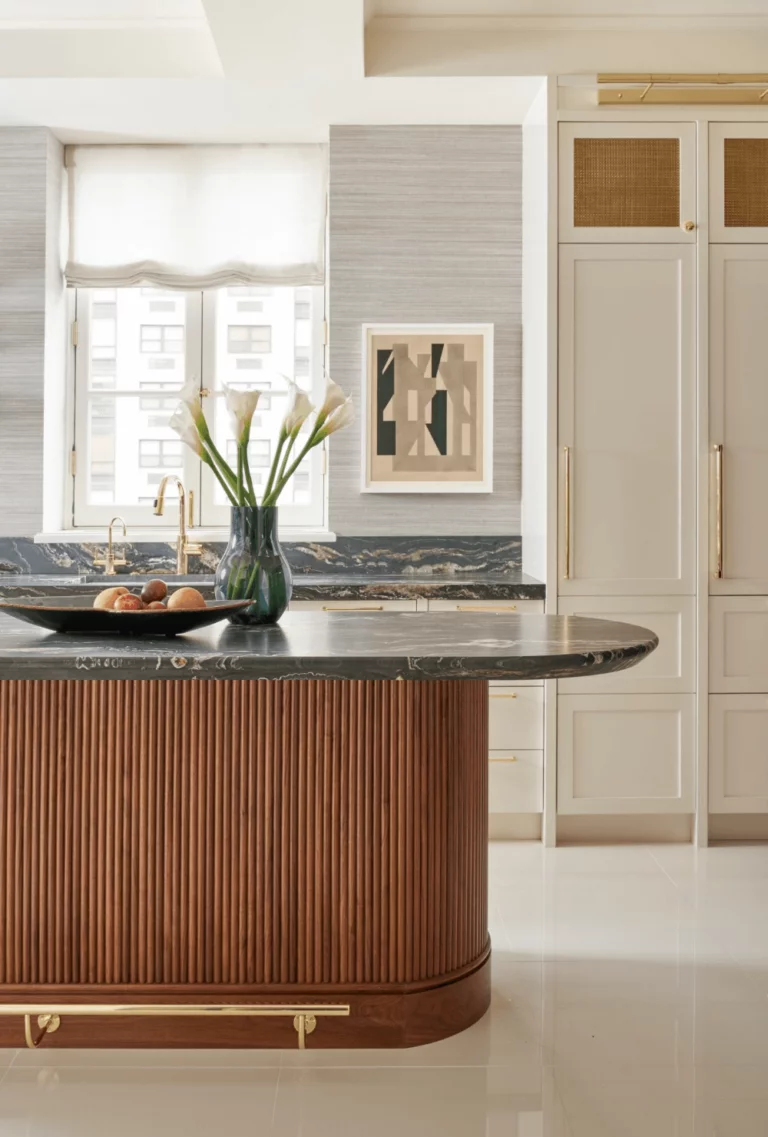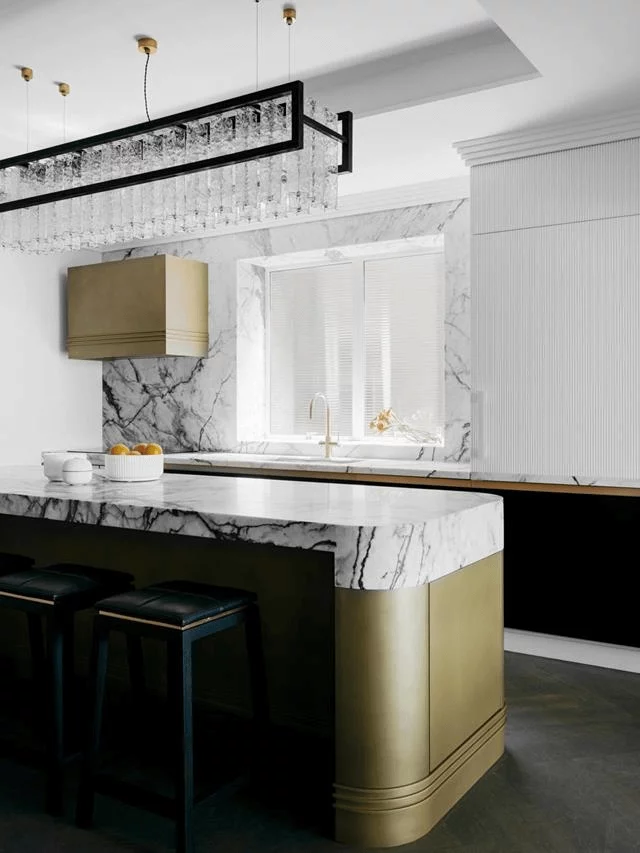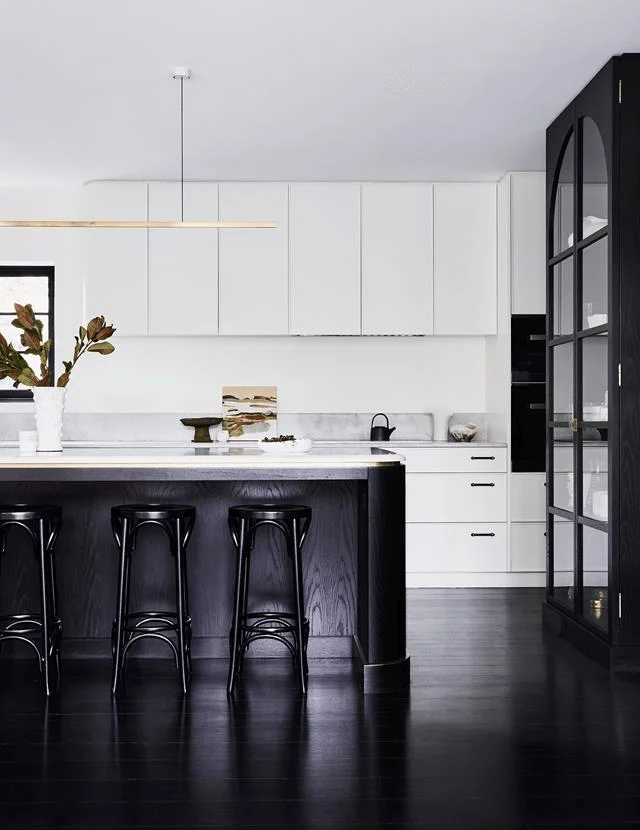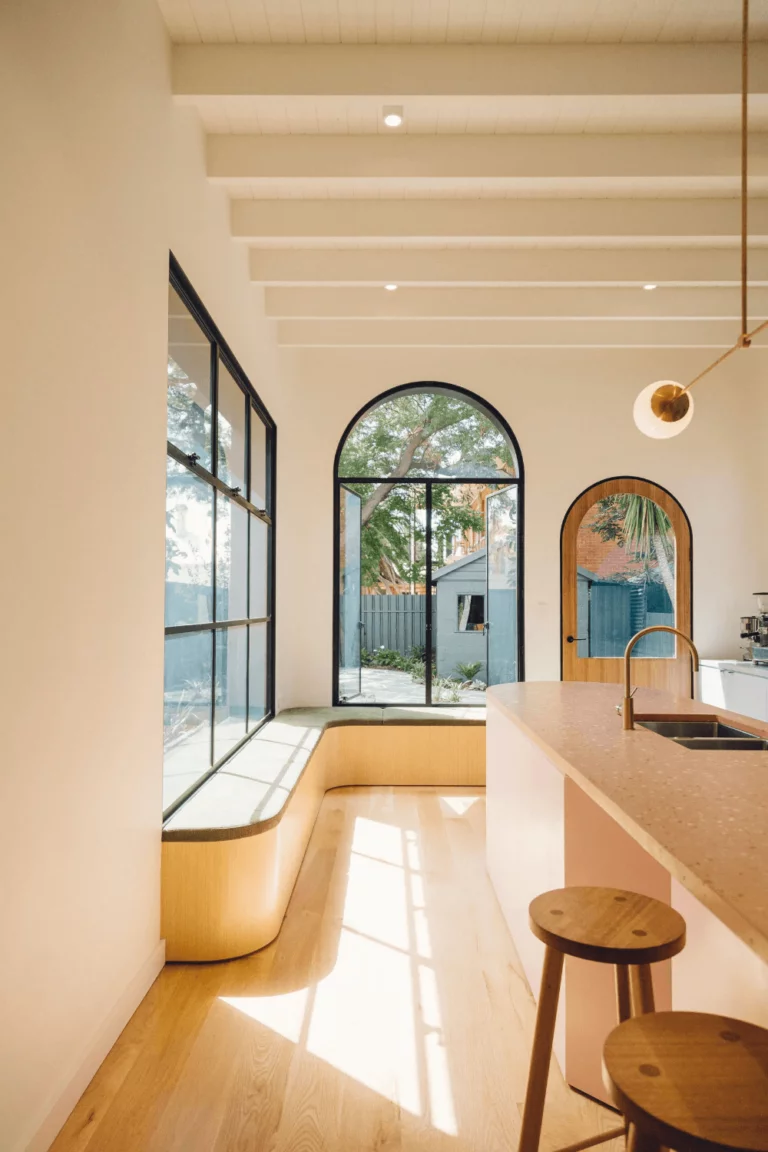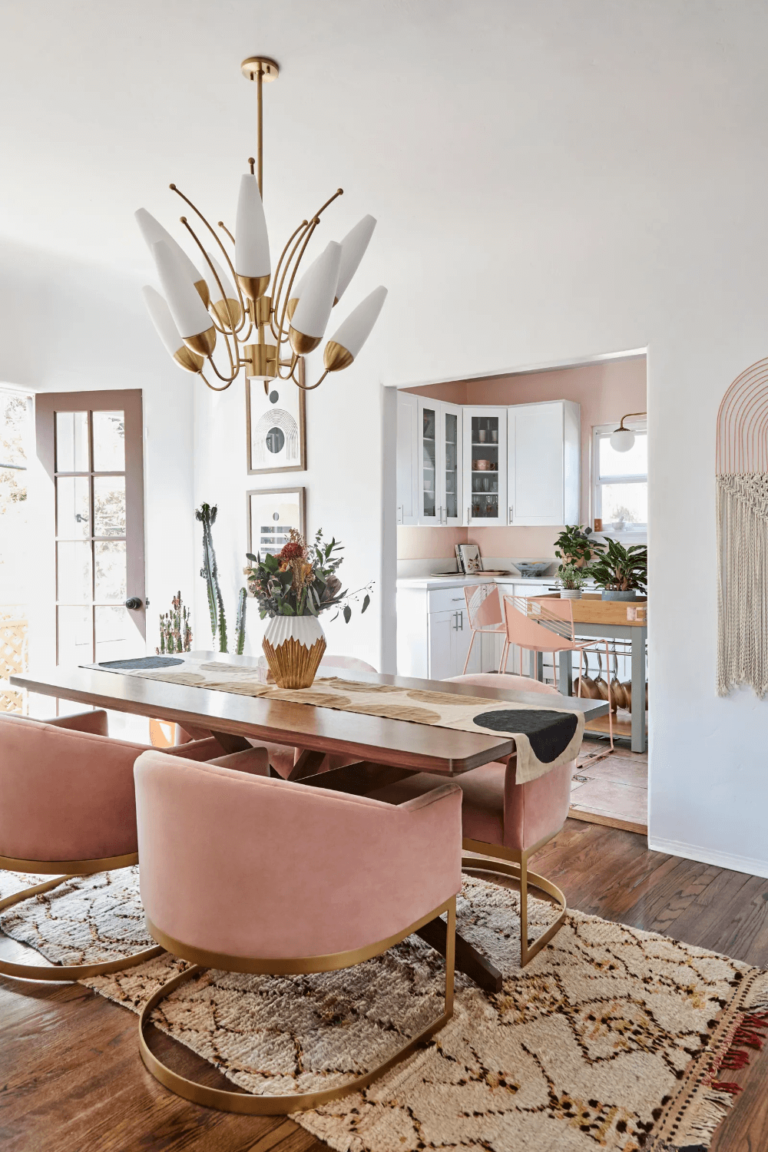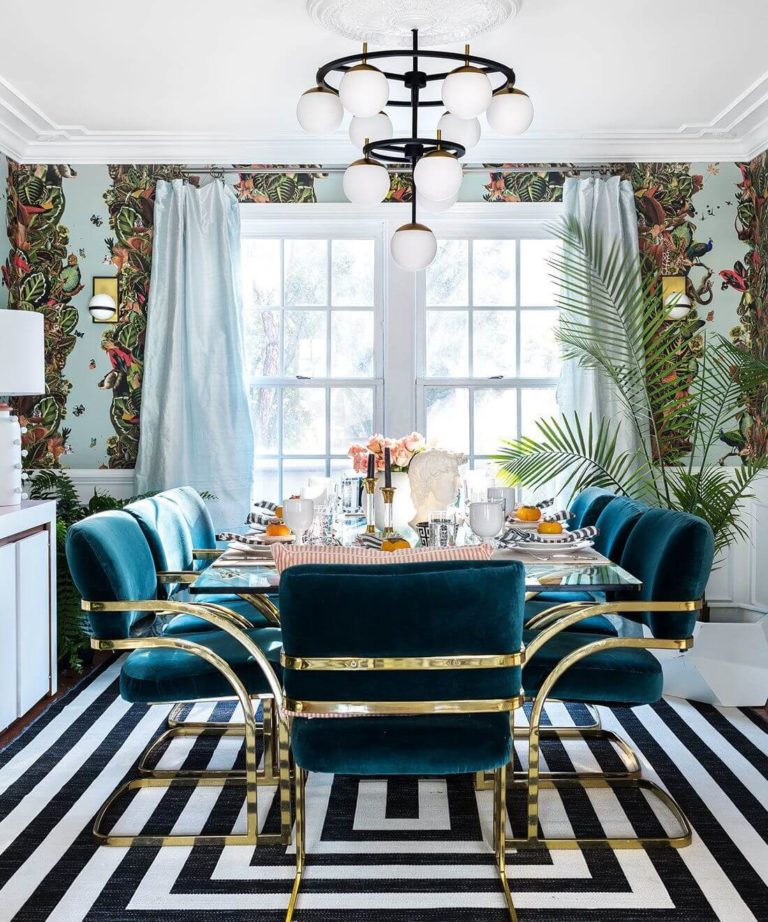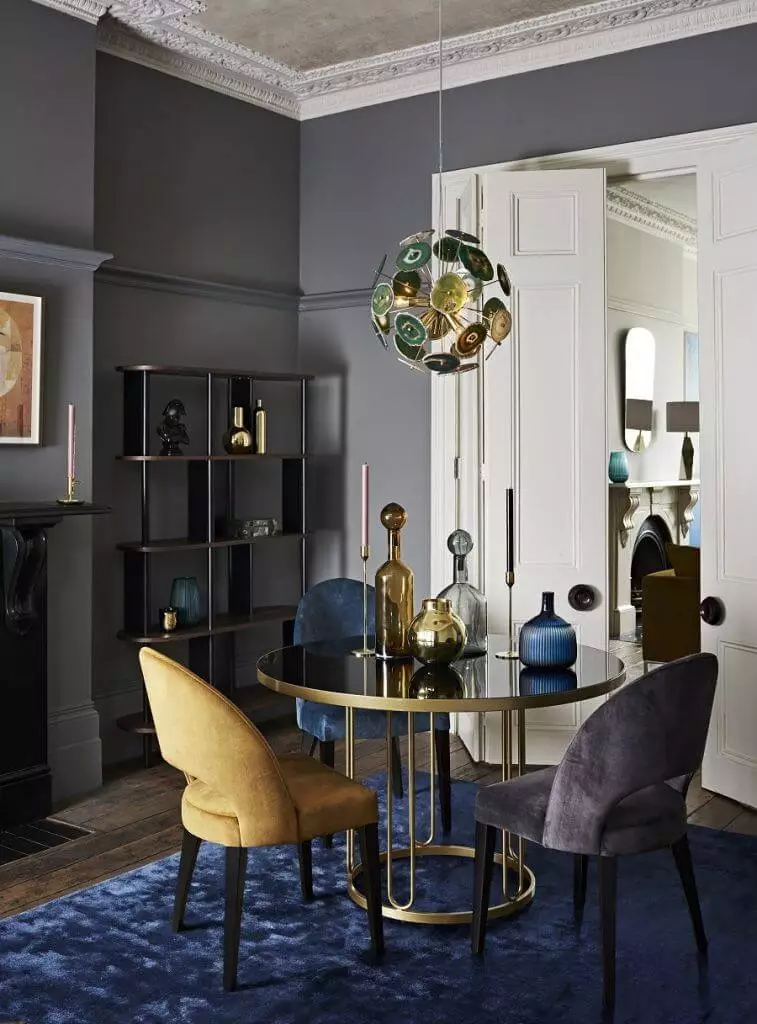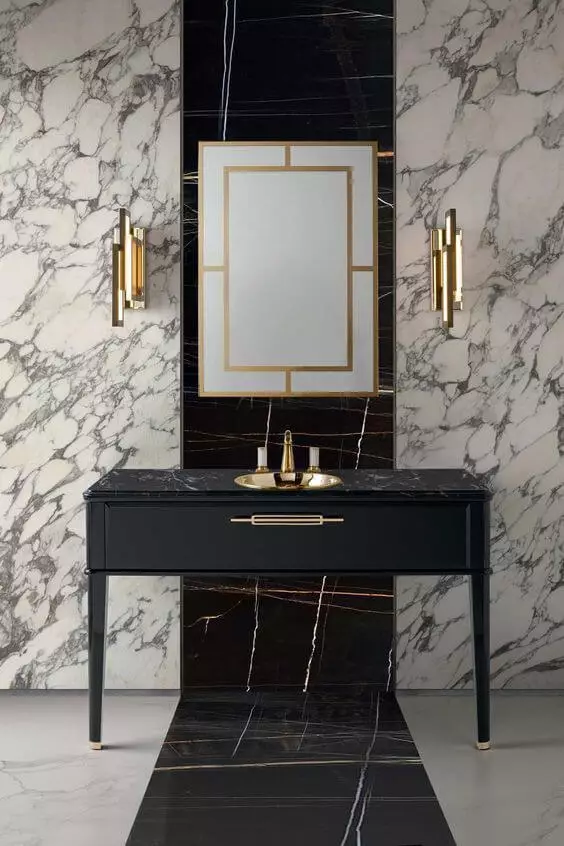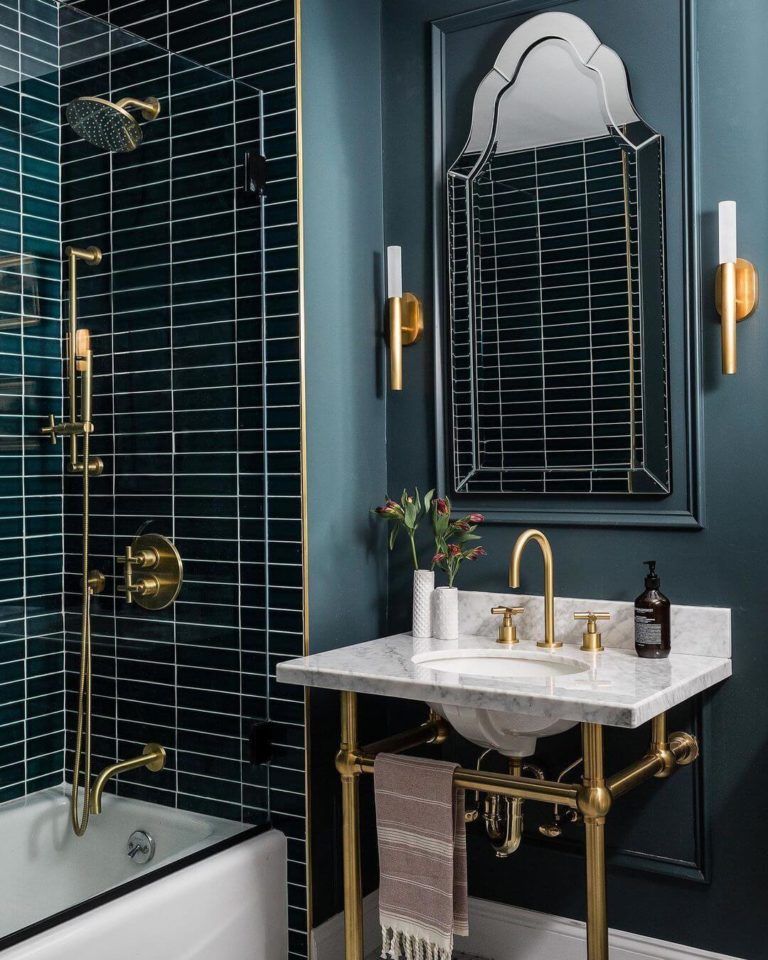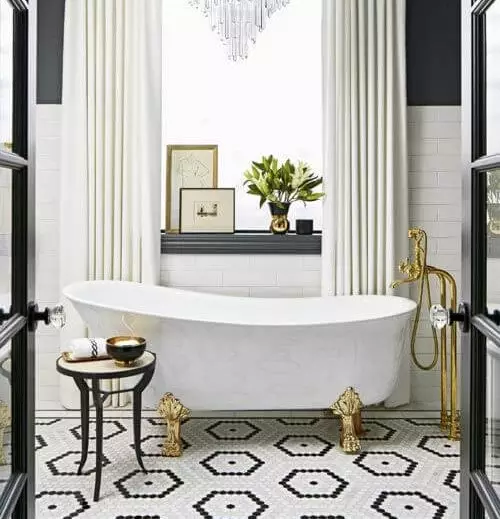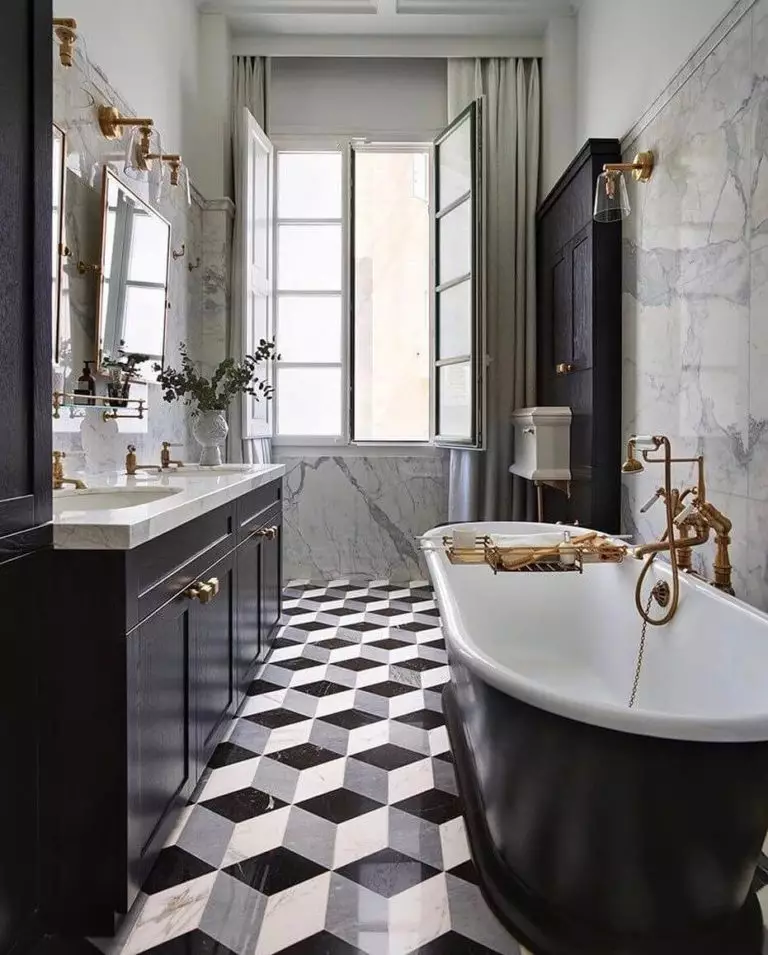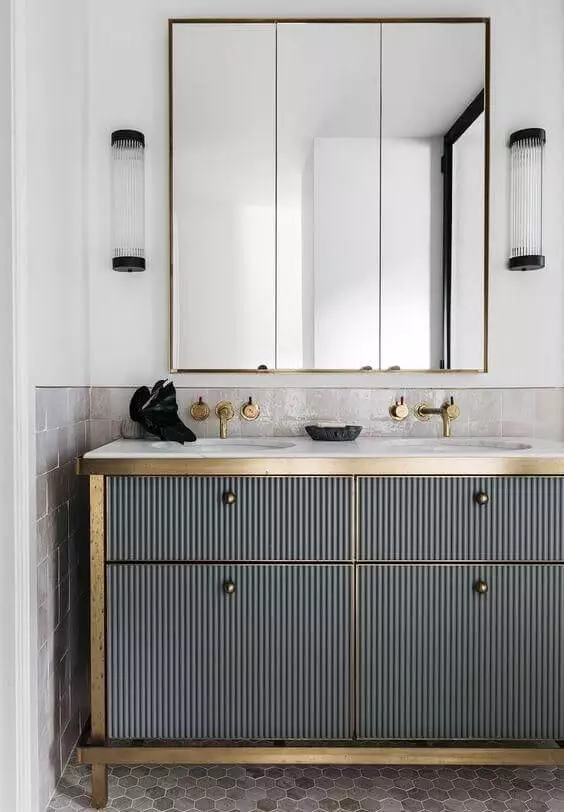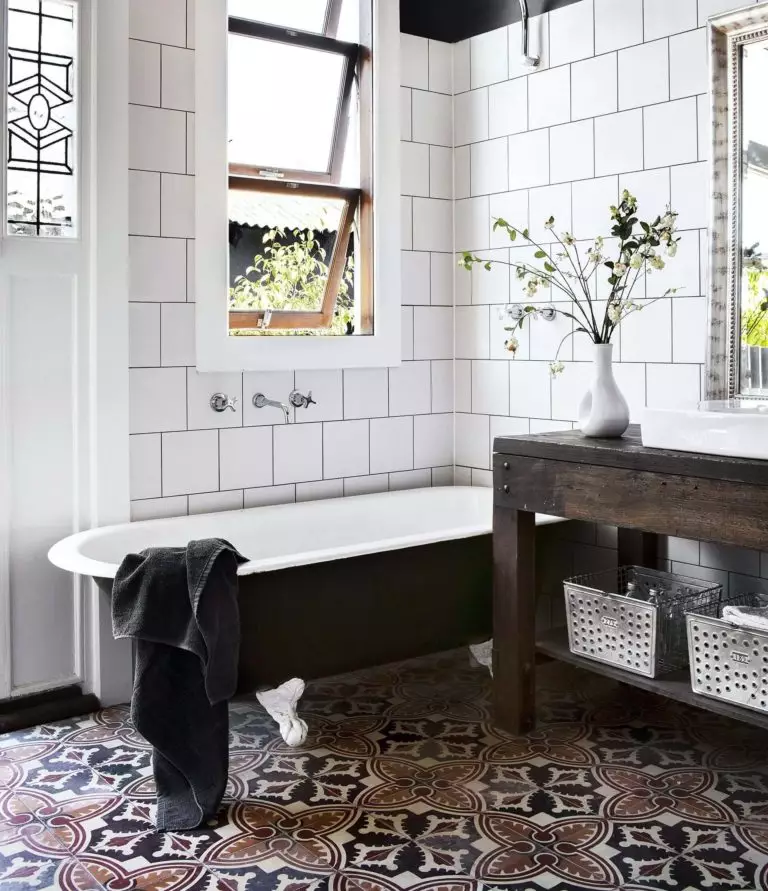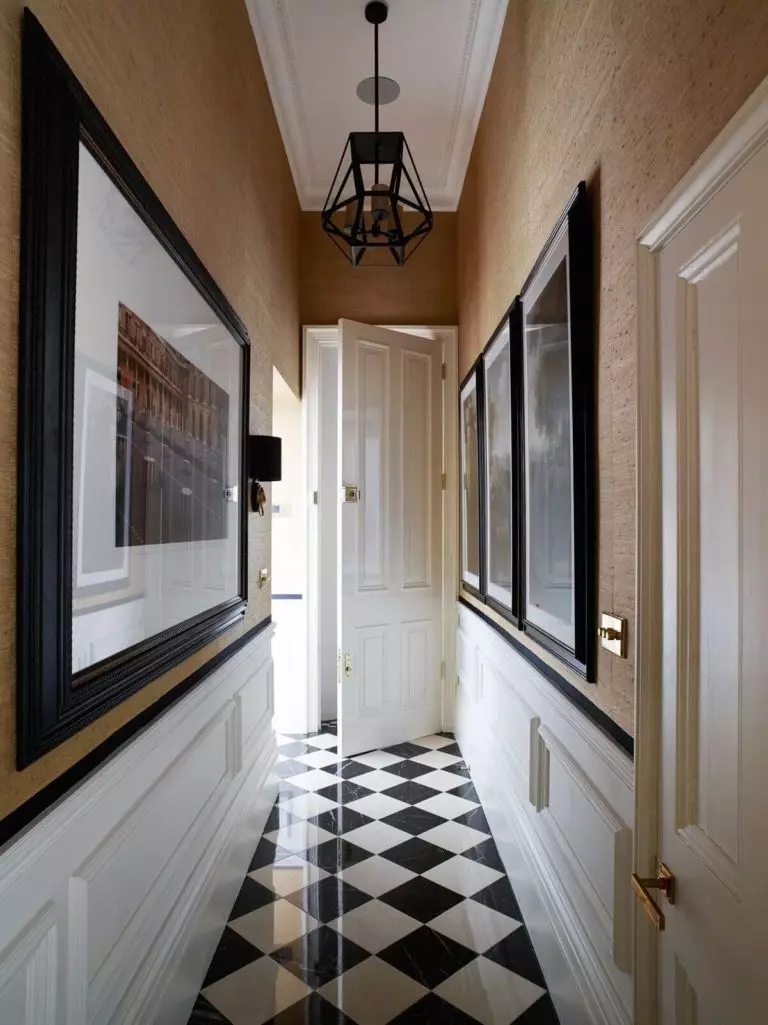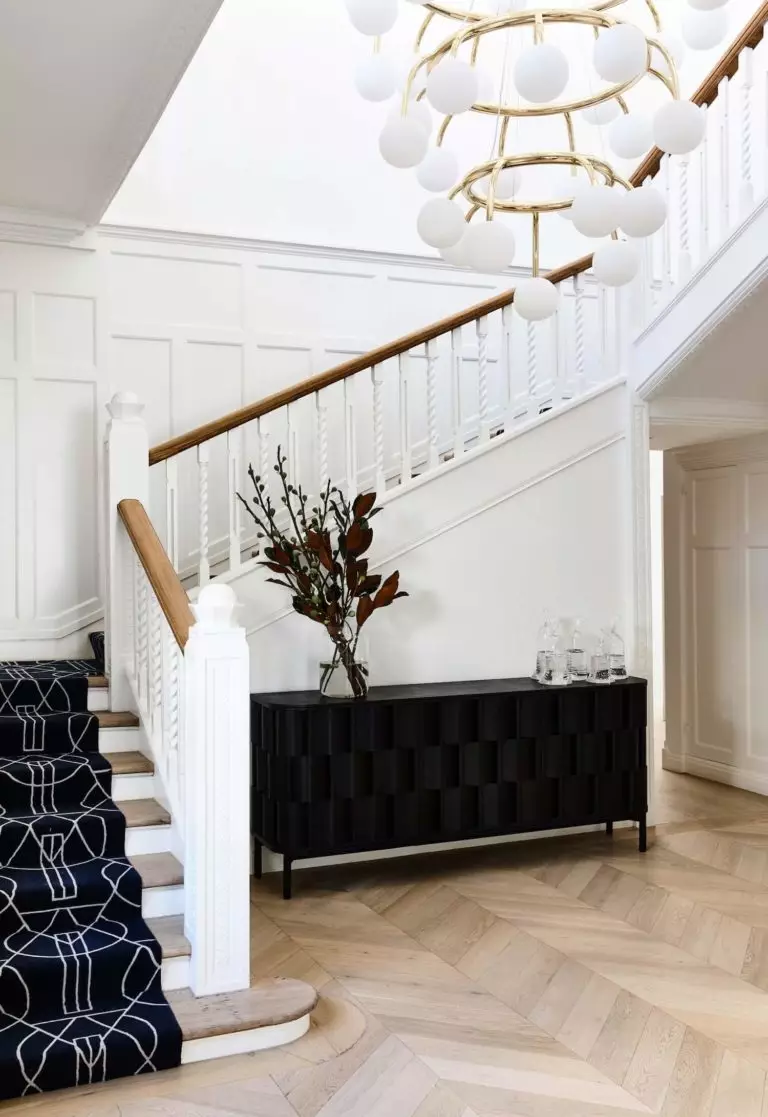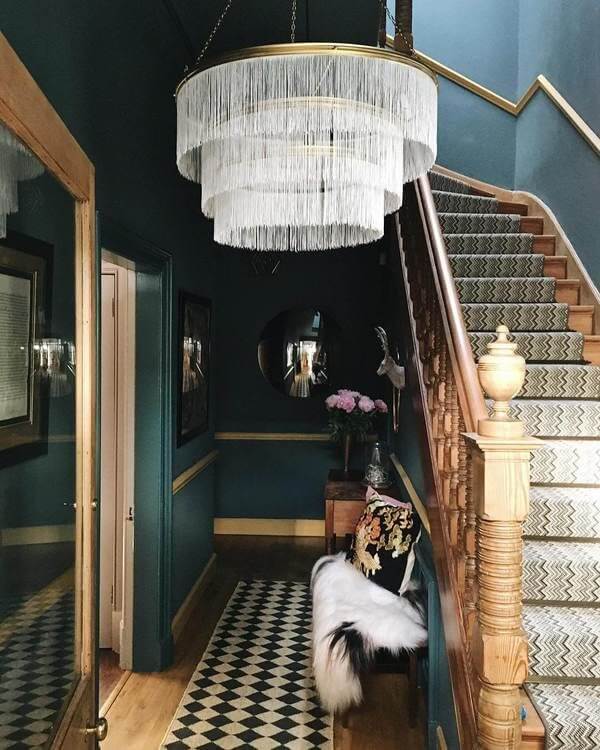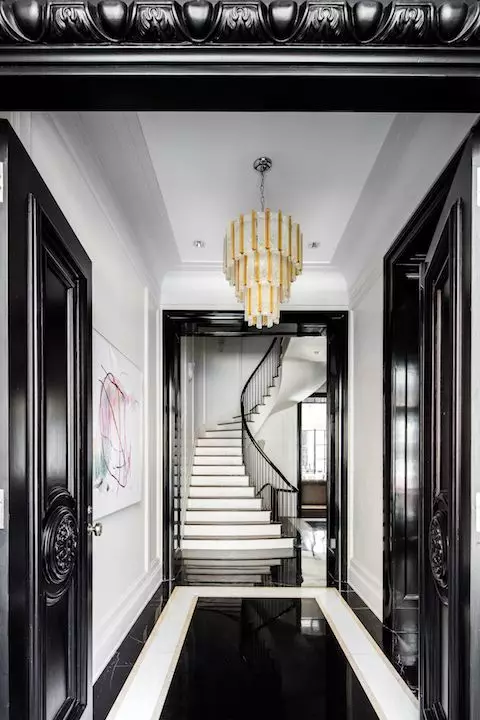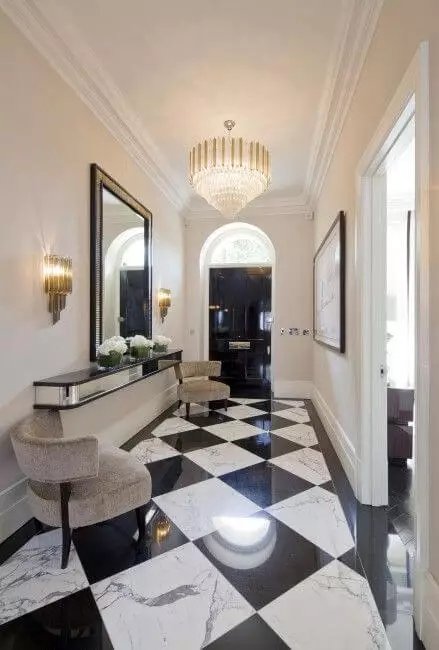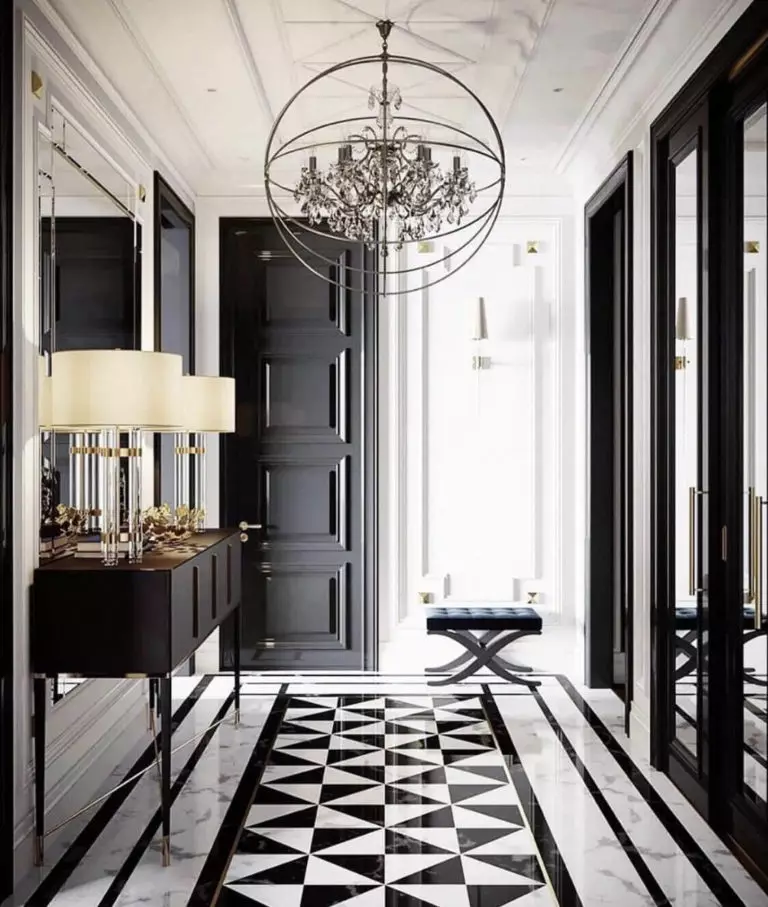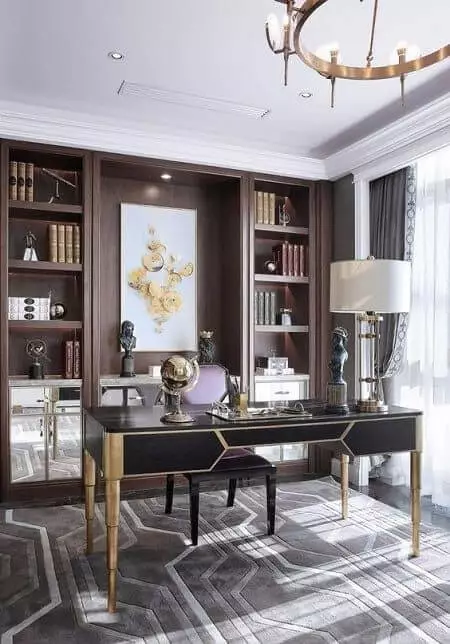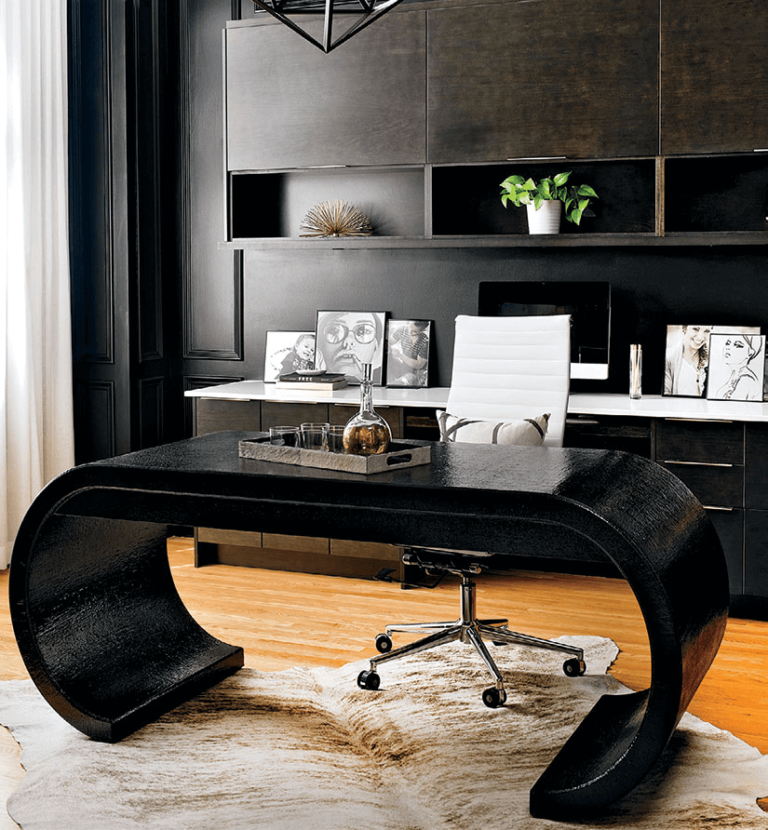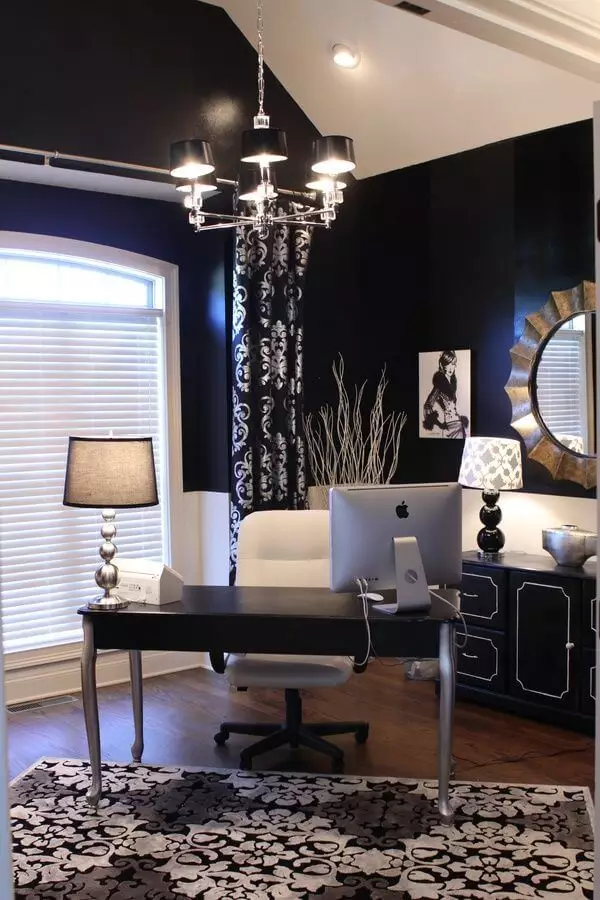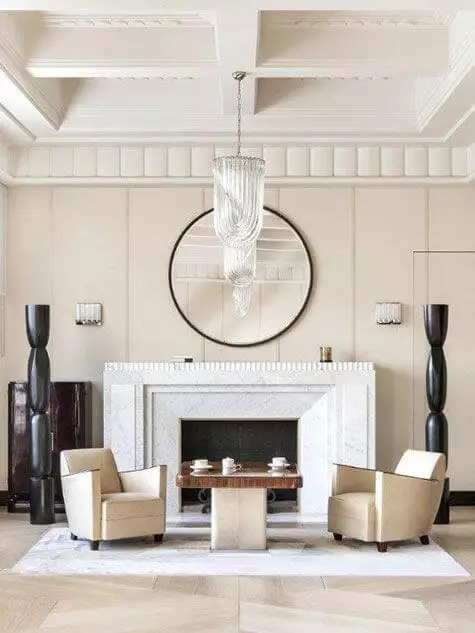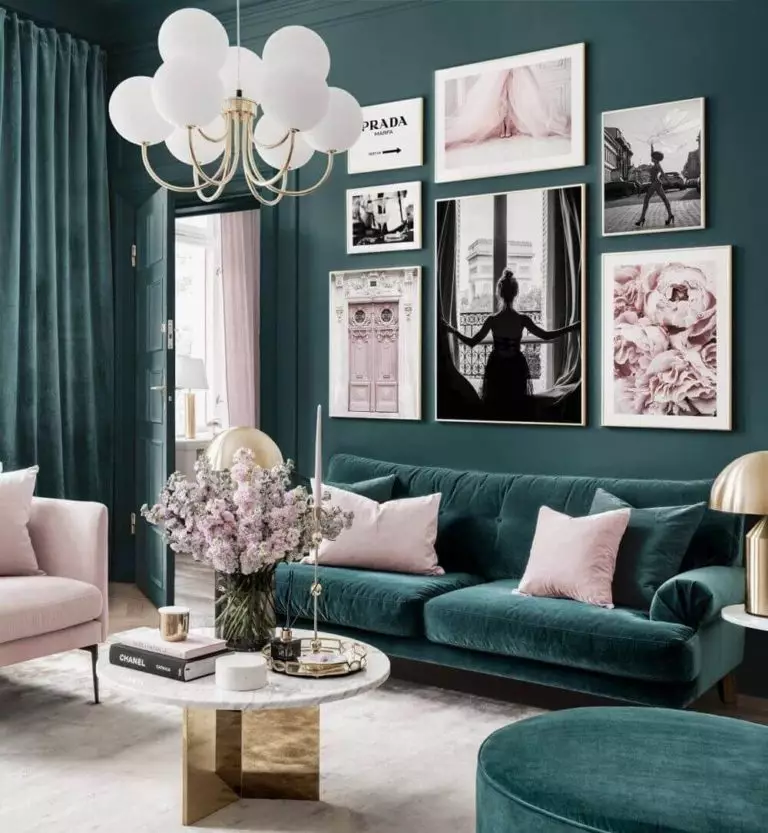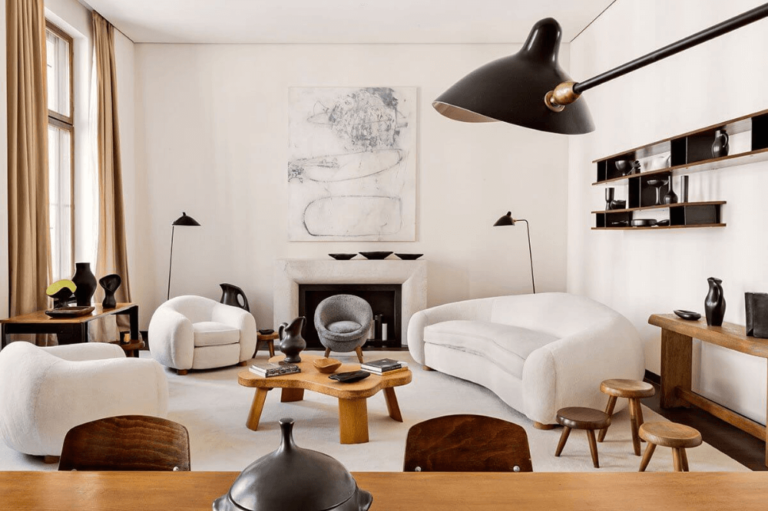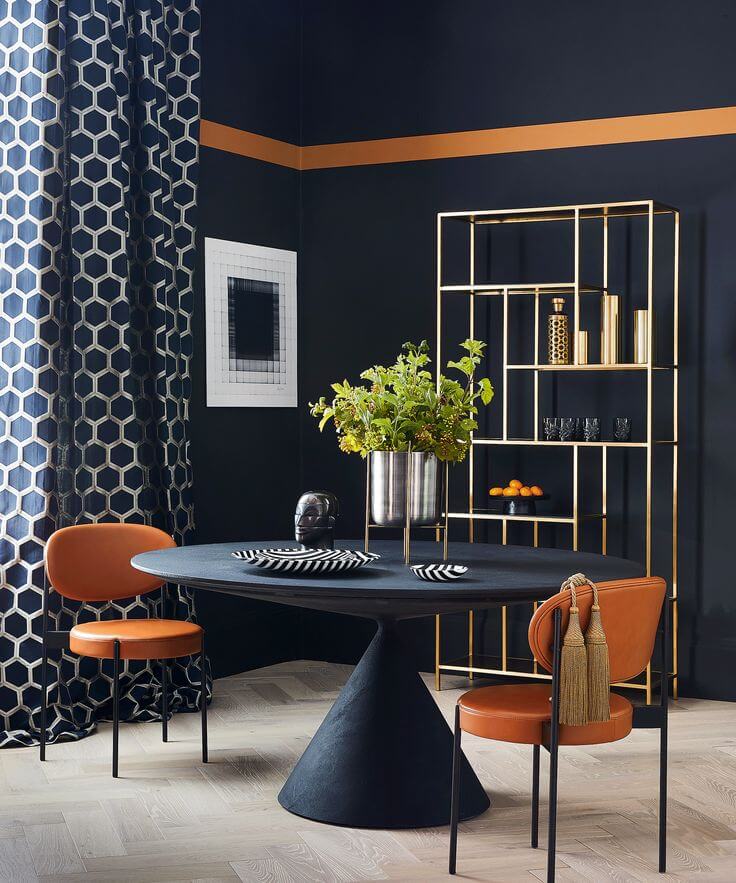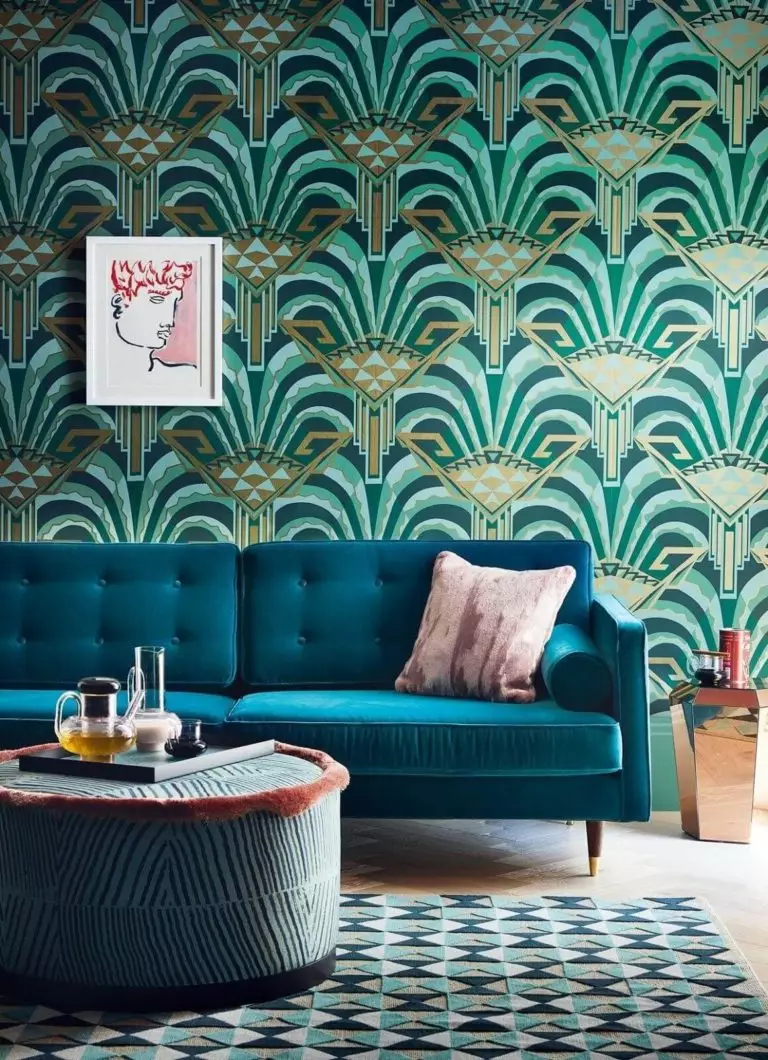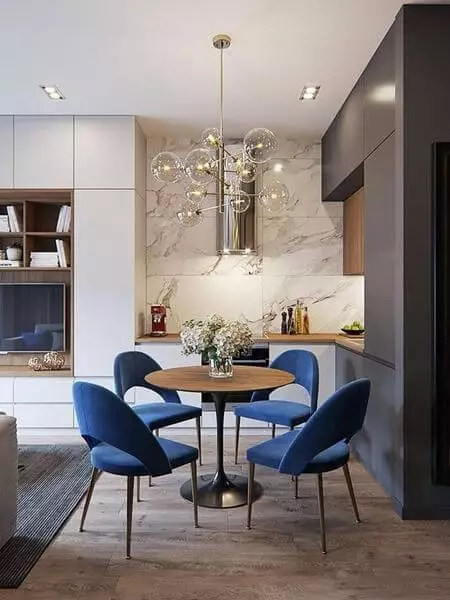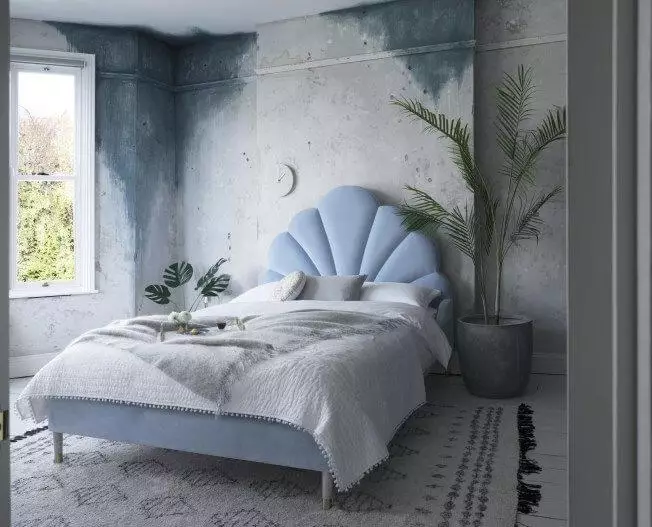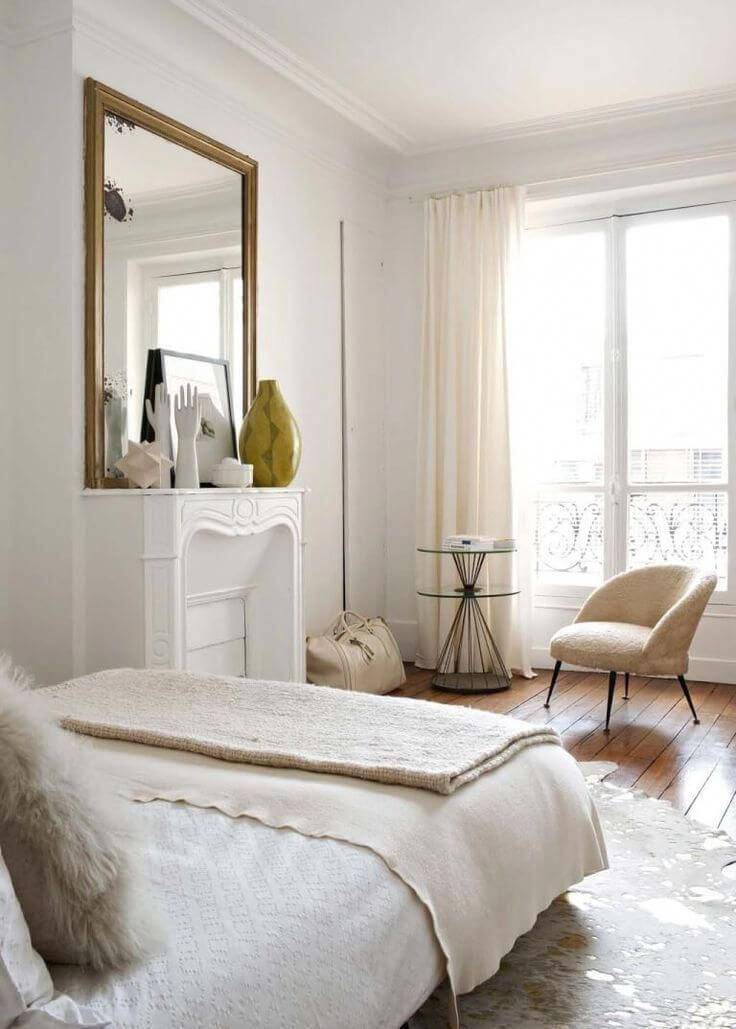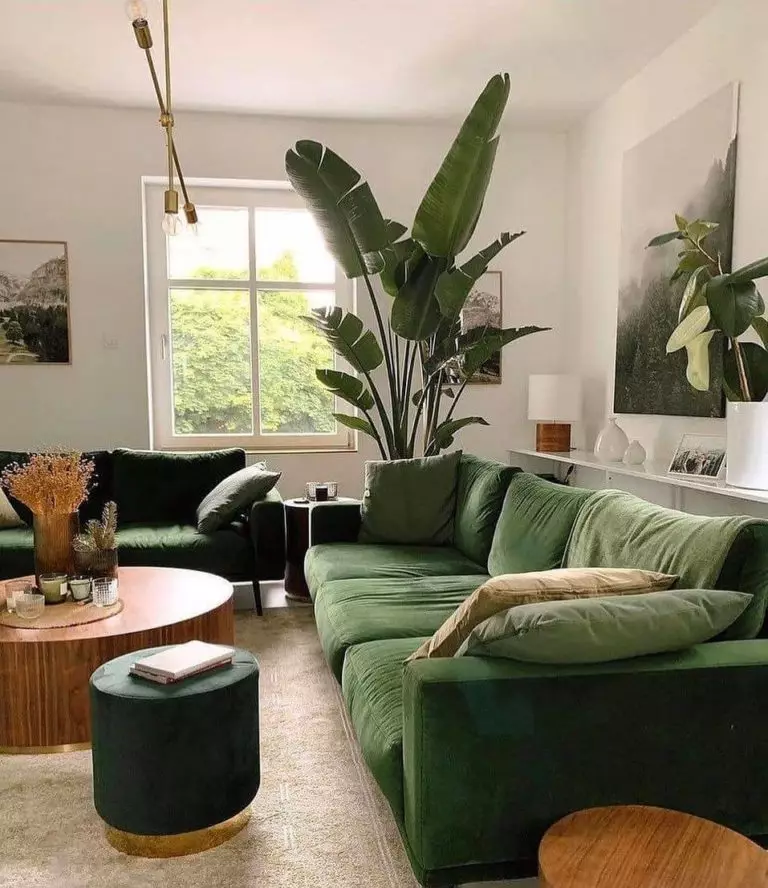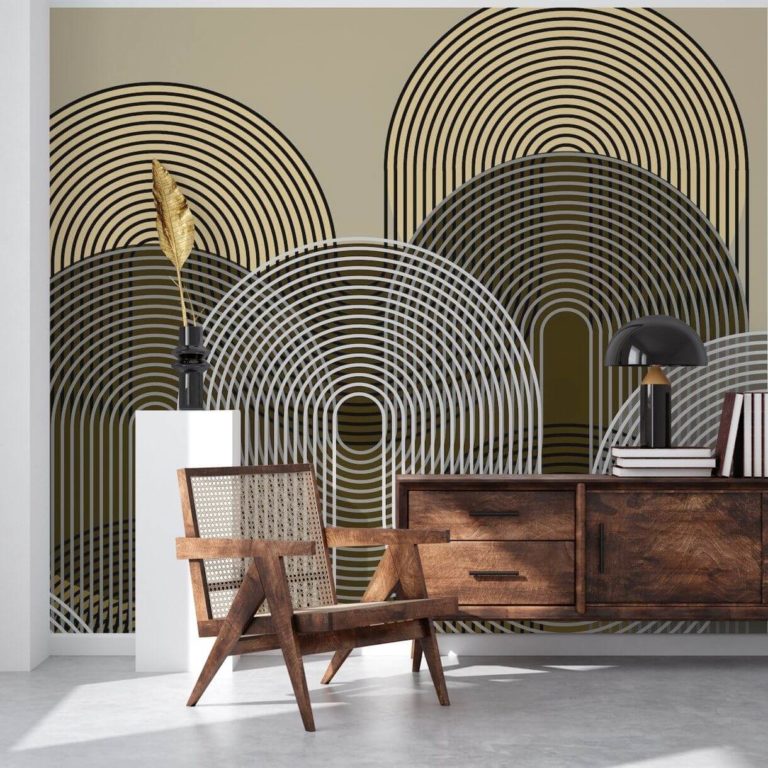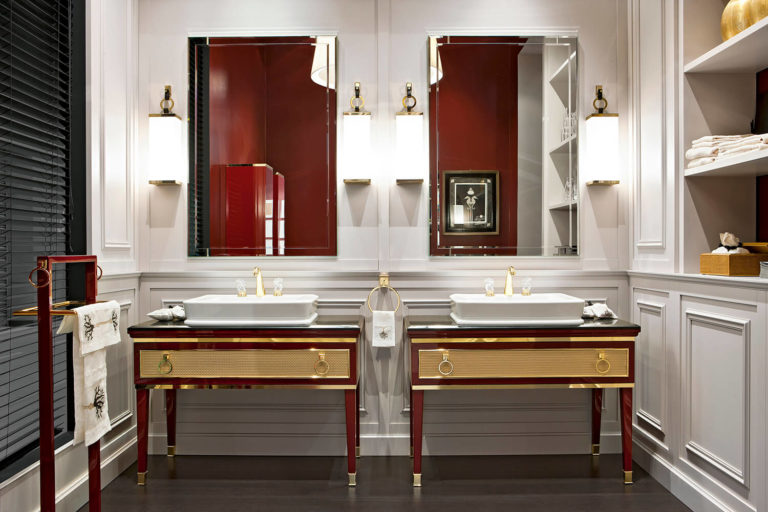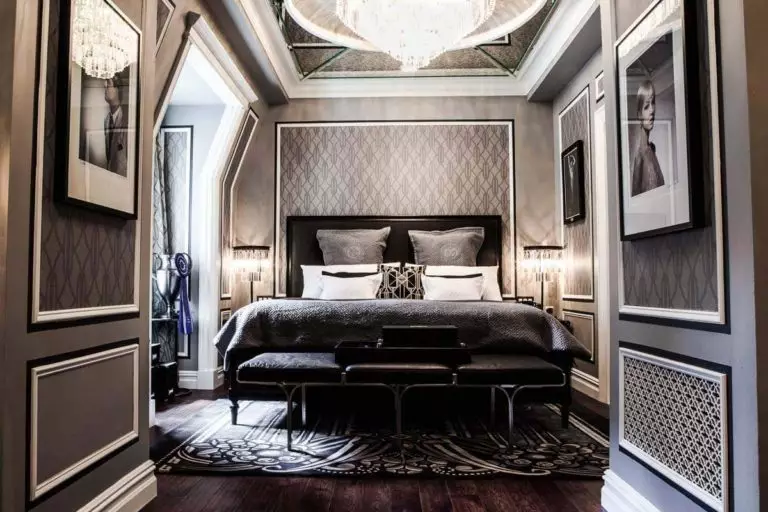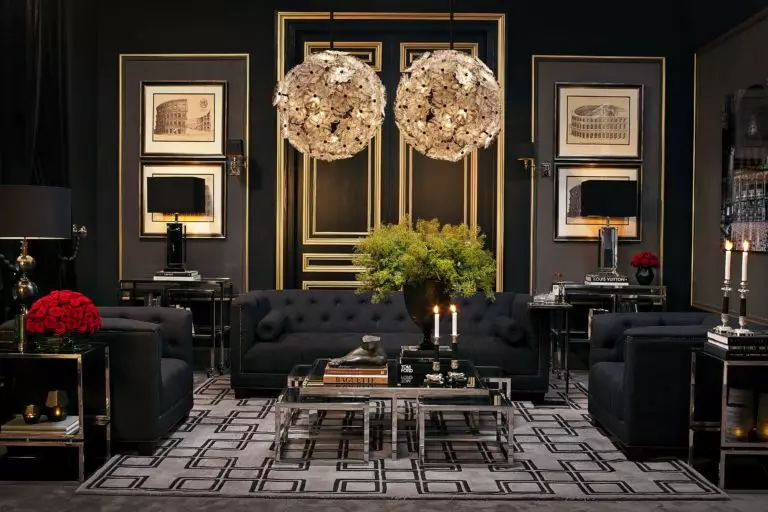
Each interior style has its own philosophy and symbolism. There are directions meant to pursue color and brightness, designs that celebrate our fantastic future, and options that suggest you stay true to yourself and slowly sail in the stream of life, enjoying its simplicity. However, there are special styles that make it possible to understand that no matter what difficulties we face, love for everything beautiful and harmonious will never leave us. This is the story of Art Deco style.
Having appeared a little more than 100 years ago, it still remains in the center of attention of designers, being, if not in the first lines of the top list of super-hot styles, then confidently occupying positions slightly above the middle. And this is quite logical: the chic characteristic of Art Deco style taste, sophistication, and special artistic value of its individual elements cannot but delight and cause a desire to stay in this atmosphere of balanced luxury for as long as possible. If such feelings are close to you, it’s time to discover this amazing style from a narrow perspective.
What is Art Deco design?
Let’s make it clear right away: the concept of Art Deco is much deeper than the direction in interior design. In fact, it is a highly influential movement that also encompasses decorative arts and architecture. It is traced to the beginning of the 20s of the last century. It was not that long since the First World War had ended, accompanied by an economic crisis, and people desperately sought to surround themselves with beautiful things and let the glitter and celebration into their lives as much as it was possible.
At the same time, a transitional period began in design, accompanied by the rejection of the lush and rich “plant” ornaments characteristic of the Art Nouveau that reigned at that time and the desire for more utilitarian forms and the maximum possible functionality. It was then that a style appeared that took an intermediate position between these two trends and is increasingly used to decorate expensive hotels and restaurants, concert halls, and other respectable public places. Then it was known as “Streamline Moderne”, “Jazz Moderne”, “Zigzag Moderne”. However, after the exhibition Exposition Internationale des Art Decoratifs et Industriels Modernes, held in Paris in 1925, this direction finally got the name of Art Deco.
Fundamental principles and key elements
The glamor and chic peculiar to Art Deco do not seem provocative and pompous at all. On the contrary, everything about this style seems moderately luxurious, certainly appropriate and emphasizes the house or apartment owners’ impeccable taste. The following principles help to achieve this effect:
Colors and prints
The key of the Art Deco palette is the domino principle, which is a combination of black and white, diluted with chrome, glass sheen, or gold accents. At the same time, designers offer other equally effective and appropriate alternatives – white and chocolate, wenge and beige, silver-gray and black. Designers suggest using the following shades as color spots and accents:
Finishing
There is nothing too harsh or purely rational about the Art Deco layout. The presence of multi-level zones in the same room, complex transitions from room to room or from floor to floor, extraordinary forms of windows, and exclusive staircases create an individual atmosphere, multiplied by spectacular, carefully selected finishes. Let’s take a closer look at what materials are used to create a harmonious base in this sophisticated style.
Walls
It is perhaps difficult to find any other style that gravitates towards wallpaper as well as Art Deco. Black with spectacular gilded patterns and dark gray with discreet silvery, golden geometric patterns and dim classic stripes – there are a lot of options, and they all become an excellent background for elegant furniture and exquisite decor.
An alternative to wallpaper can be finishing with thin porcelain stoneware with the texture of granite and marble and boiserie panels on the entire wall – plain or with a contrasting relief. And, of course, do not forget about such a fashionable novelty as 3D panels – Art Deco provides simply unlimited possibilities for their use.
At the same time, it is important to understand that although wall decoration is the base, in Art Deco, it still draws a lot of attention due to its rich texture. That is why you should take enough time to select materials: in this case, everything should be one hundred percent perfect.
Ceiling
Decorating ceilings in Art Deco interiors is also an opportunity to let your imagination run wild. Here you can often find multi-level structures, textured surfaces, and even divisions into a kind of caissons with stucco molding. Today, the same caissons are often illuminated with LED lights, effectively framing the chandelier.
At the same time, with a sufficient number of expressive accents in the interior, you can do without embossing classical elements on the ceiling and stop at a simple and even white surface. One should note that textured plaster imitating marble or natural suede is often used for it.
Flooring
The hallmarks of Art Deco are black and white floor tiles or porcelain stoneware – and possibly natural stone. However, you may as well prefer neutral shades with a calm classic pattern or traditional parquet made of wood of rather expensive species.
Furniture
Interior furnishings in the Art Deco style are quite rich and include a sufficient number of elements to avoid unnecessary voids. Here, sofas and armchairs of simple shapes or with bizarrely curved backs, suede-upholstered puffs in the form of a cube or a cylinder, reign here. Polished solid wood tables coexist peacefully with coffee tables with marble tops on a gold-colored metal base, while laconic paired sideboards and graceful discreet consoles bring an impeccable balance to all this splendor.
By the way, consoles, sideboards, and accent tables are especially appreciated in the Art Deco style. Therefore, there should be at least one such element in the room, on which an exquisite vase of flowers flaunts. At the same time, it does not have to be deliberately luxurious: the combination of strict lines and expensive materials fascinates no less.
Another very valuable attribute for Art Deco is a fireplace and, in particular, a fireplace portal, which adds coziness and respectability. It can be neoclassical or contemporary, with sleek and shiny materials. Complete the composition with sophisticated décor elements, such as animal skin on the floor, floor figurines, or a luxurious set of fireplace accessories.
Lighting
There should certainly be a lot of light in any room decorated in the style of the 1920s and 40s – it is a complex lighting scenario that provides such interiors with shine and glamor. As a rule, a chandelier appears in the center of a composition of lamps, and its design should be, as they say, on a grand scale – the more spectacular, the better. Impressive sizes, various shapes – from traditional to extraordinary, crystal pendants, gilded balls, and compositions made of the same tubes bathed in the sunrays, black satin shades – these are just some of the elements characteristic of Art Deco pendants.
Floor lamps of the same design or a set of elegant table lamps placed on pedestals and consoles can complement such splendor. In addition, hidden lighting systems are becoming more and more popular today, which we will talk about a little later.
Textile
Chic and texture are two key features for the textile decoration of any room in which Art Deco reigns. Drape windows with heavy curtains – perhaps even using two colors on the canvas. Throw a fluffy solid rug, an animal print accessory, or a bold oriental accessory on the floor, and complement the composition with bold classic pillows. As for the upholstery, natural leather, velour, velvet, and dense modern textiles with a smooth texture are often used – moreover, preference is given to monochrome and pastel or neutral shades.
Decor
The list of decor relevant to Art Deco is impressively wide. However, three key elements make this style exactly what it is. Let’s dwell on them in a little more detail.
Paintings
We can say that the history of Art Deco began with paintings, which means that one simply cannot do without them in such an interior. In terms of genre, the preference is most often given to graphics, prints, abstract painting – and even black-and-white photographs “from the past.” No less attention is paid to the choice of the frame: they are laconic in terms of decor, but at the same time, they catch your attention with the radiance of chrome, the glitter of gold, and the gloss of black lacquered wood.
As for their placement, paintings are often hung in pairs or as collages (if the size allows). A single item of this kind is also an option if it is large enough.
Mirrors
The second most important accessory, without which Art Deco will be something between classic and glamor, but completely different, are mirrors. Spectacular and massive, in a Venetian frame, the form of sunbeams, or even in a laconic shiny frame – they adorn living rooms, bathrooms, halls, bedrooms, and, of course, dressing rooms.
Another type of such decor is facet mirrors and elements. They can partially decorate the wall and the entire surface as a whole, visually increasing the space and adding shine and light.
Figurines and vases
Put on the floor and table, low and high, ceramic, bronze and porcelain – figurines and vases are sure to be present in the Art Deco interior, setting the right tone. Do not be afraid of oversized accessories as well as eclectic combinations of colors and shapes – any solution will be appropriate here.
As for other decorative elements, the list of the most popular items includes candelabra and candlesticks, globes, exotic souvenirs, abstract metal table decorations, boxes, and tall indoor plants in floor pots or vases.
Art Deco style in various rooms
Art Deco can efficiently transform any interior and look good in any room – the only exception is the nursery, but you can find the perfect balance even there.
Living room
An Art Deco living room is the epitome of sophisticated elegance. This result can be achieved through the correct design of the main surfaces, rich furniture with sufficient elements, and a multi-level lighting scenario. A fireplace and niches in the walls, in which decor and exclusive lamps look great, can be quite good options (and sometimes mandatory solutions).
Bedroom
Art Deco relaxing spaces are decorated with a truly royal style. The traditional scheme of finishing and furnishing the bedroom includes an enormous bed with a high curly headboard and decorating the wall above it with one or two symmetrical textured panels. For lighting, luxurious sconces are selected for the design of the same chandelier (here you cannot do without it either), and blackout curtains, carpets with an elegant geometric print, bedspreads made of expensive textiles and eye-catching mirrors that add comfort and chic. Also, a cozy armchair, an elegant bench, and a luxurious chest of drawers will be no less appropriate.
Kitchen and dining room
When you look at the Art Deco kitchen, it’s hard to believe that food is cooked here at all – everything is so classically luxurious, elegant, and respectable. Neither bright colors nor pompous finishes are used; only strict geometric shapes, expensive solid wood, glossy lacquer, marble, and stone countertops.
Dining rooms decorated in this way are worthy of the attention of aristocratic persons. A massive oval or rectangular table becomes a key element, soft chairs or half-chairs upholstered in velour and, possibly, decorated with a coach tie, and a constant chandelier flaunts above the table. Peculiar to this style is a small but elegantly decorated bar counter with matching chairs. In addition, in Art Deco, maximum attention is paid to table setting: dishes, cutlery, and textiles should fully correspond to the atmosphere of refined chic.
Bathroom
Art Deco is a celebration of sophistication and harmony that does not skip the bathroom. As a rule, porcelain stoneware with a stone and marble effect reigns here, as well as dark tiles with a golden baroque pattern. Plumbing attracts the eye with a golden and brass sheen, while the light streams from an exquisite chandelier (yes, we refer once again to it), laconic spotlights, and magnificent wall sconces. A claw-foot bath would evoke associations with aristocratic mansions of the last century. Add mirrors, eye-catching skirting boards, and chic dark furniture for an uncluttered aesthetic pleasure.
Hallway
The “visiting card” of your home, decorated in the Art Deco style, will make it clear: the owners know how to create harmonious chic and have impeccable taste. You can choose chocolate or light colors, decorate the walls with tiles, wallpaper, or paint. In any case, do not forget about the main thing: a narrow console or chest of drawers and a luxurious chandelier (you can complement it with elegant sconces) are still must-haves.
Home office
An Art Deco home office is very similar to a classic one, with the only difference being that it includes much more often light colors and elements of unconditional chic. Add designer lamps and spectacular curtains to the traditional office, replace a dark leather chair with a light one, hang a couple of abstract paintings, or decorate a part of the wall with faceted mirror tiles – in such an environment, work turns into pleasure.
Modern Art Deco
Art Deco has never been against the achievements of technical progress. Throughout the entire period of its existence, it was constantly traced both to love for various kinds of lamps and laconic clear lines. Art Deco during its heyday – and these are the 30-40s of the last century – and modern Art Deco really differ from each other, although one cannot say that these differences are so radical. And yet, let’s talk about them in more detail.
Art Deco style: is it trending now?
Let’s put it this way: it has never been out of trend. Remaining in the group of traditional styles along with classics, Art Deco is still much closer to the modern interpretation of luxury. Therefore, it is still often chosen for decorating houses and apartments, the owners of which want to demonstrate a certain social status.
Why should you try this style?
The first reason is the possibility to plunge into the atmosphere of the “Great Gatsby” era, when chic, aesthetics, beauty, and art created the most comfortable environment for people, filling them with delight and positive emotions even in difficult times. Today, Art Deco is seen as an opportunity to move away from the laconicism and restraint characteristics of trendy minimalism, the excessive austerity and “industrialism” of the loft and sometimes the straightforward high-tech utilitarianism. A style in which sophistication, comfort, and elegance surround you will allow you to relax in every sense – physical, visual, and mental.
Who is Art Deco suitable for?
Exquisite design in the spirit of the 20-40s of the last century will be the perfect solution for you in the following cases:
Art Deco style in different countries
Art Deco is a style that is quite integral and has clearly defined principles, and therefore its differences, when used in different countries, are not too significant. And yet, if you managed to fall in love with this style, and are interested in the nuances, let’s find out what they are, depending on the geography of Art Deco integration.
USA
Here, in the homeland of the Great Gatsby and the real-life famous bootleggers, Art Deco has reached the maximum possible scope both in architecture and interior design. Even today, American Art Deco remains the most spectacular Art Deco variant – with huge spaces and very high ceilings, in a cream, brown, or chocolate palette, with mosaic elements on the walls and patterned parquet flooring.
England
British Art Deco is more like a classic – from the reference style, it has got only an abundance of metallic elements in golden tones and more elaborate and massive lamps. The palette is dominated by brown tones, although burgundy and purple can be seen more often than anywhere else.
France
The French version of Art Deco is much closer to the traditional one. There are a lot of arched openings and smooth lines, baroque patterns, and domino-style solutions. There are often luxurious wallpapers with bold abstract prints and low deep semi-chairs with exclusive trim in such interiors.
Netherlands
Today this country is considered the cradle of modern Art Deco. Local brands present an extensive collection of decor, furniture, and accessories in this style – including stylized items from the past. Interior design, in this case, also implies darker tones, and golden surfaces seem to have a muted shade.
China
The eastern interpretation of the style also does not include anything revolutionary – except that the palettes become darker with a predominance of black, chocolate, and wenge. In addition, the abundance of gold and elements of local culture – decorative accessories and panels with authentic motives – are often celebrated here.
The sophistication of the Art Deco style is undeniable, and it is extremely difficult to resist it. You will not regret for a second choosing this style of interior design for your home: the atmosphere of sophistication, harmony, and perfection that defines this design is able to awaken your creative energy and the ability to achieve genuine aesthetic pleasure.
